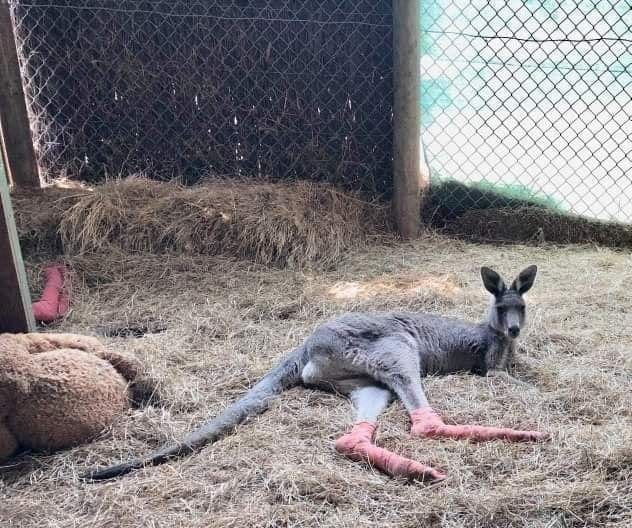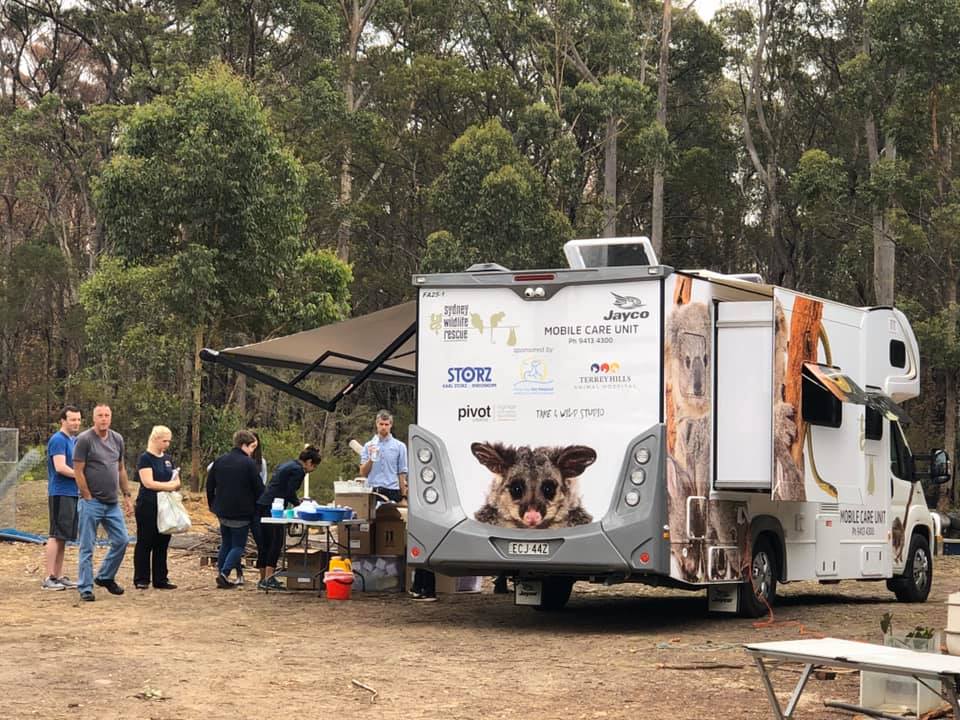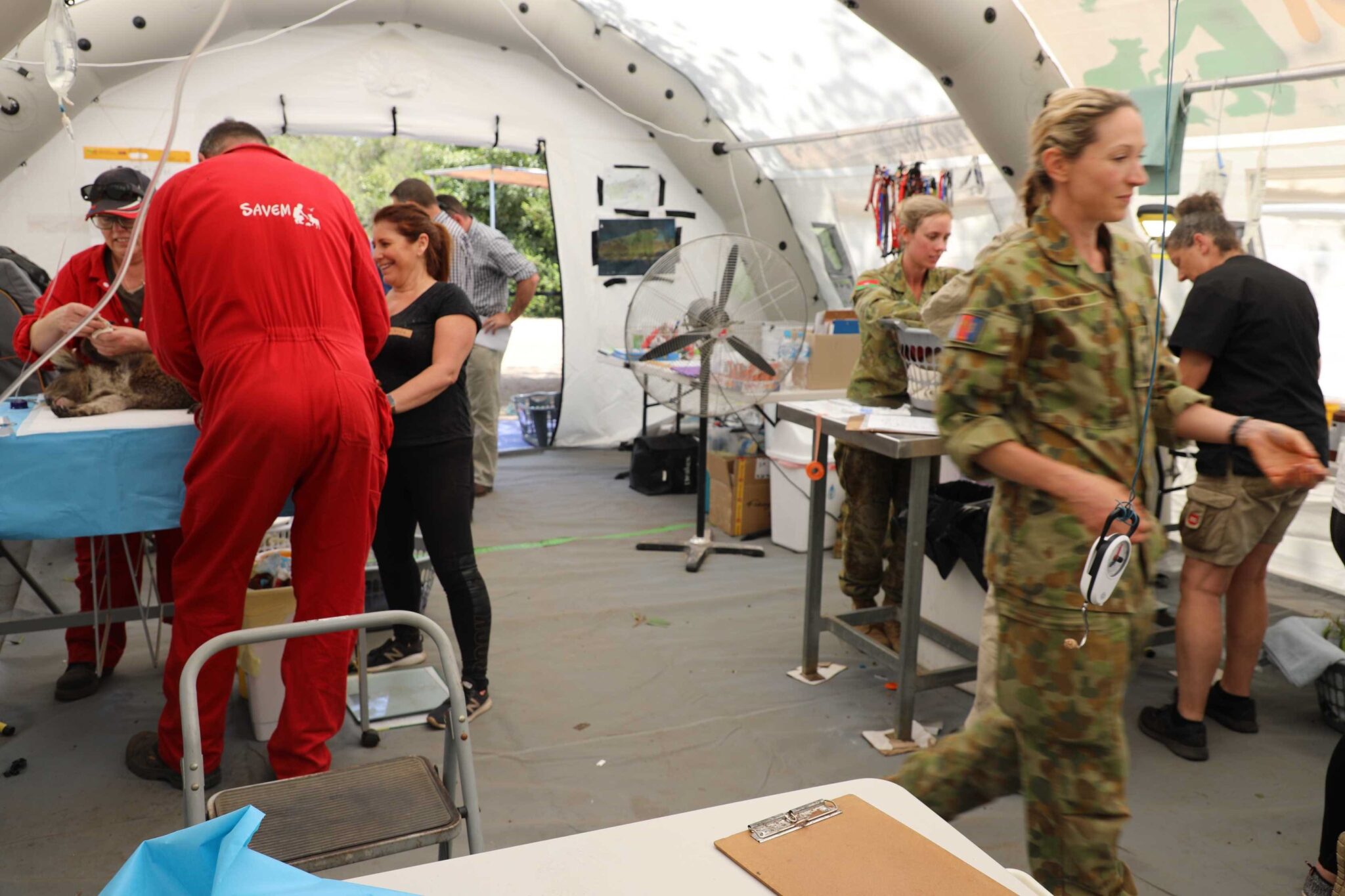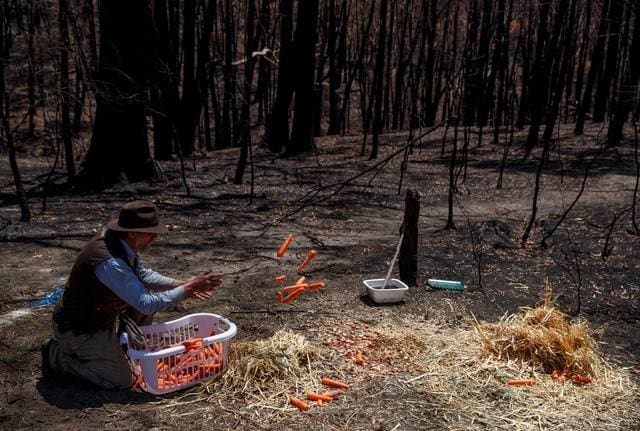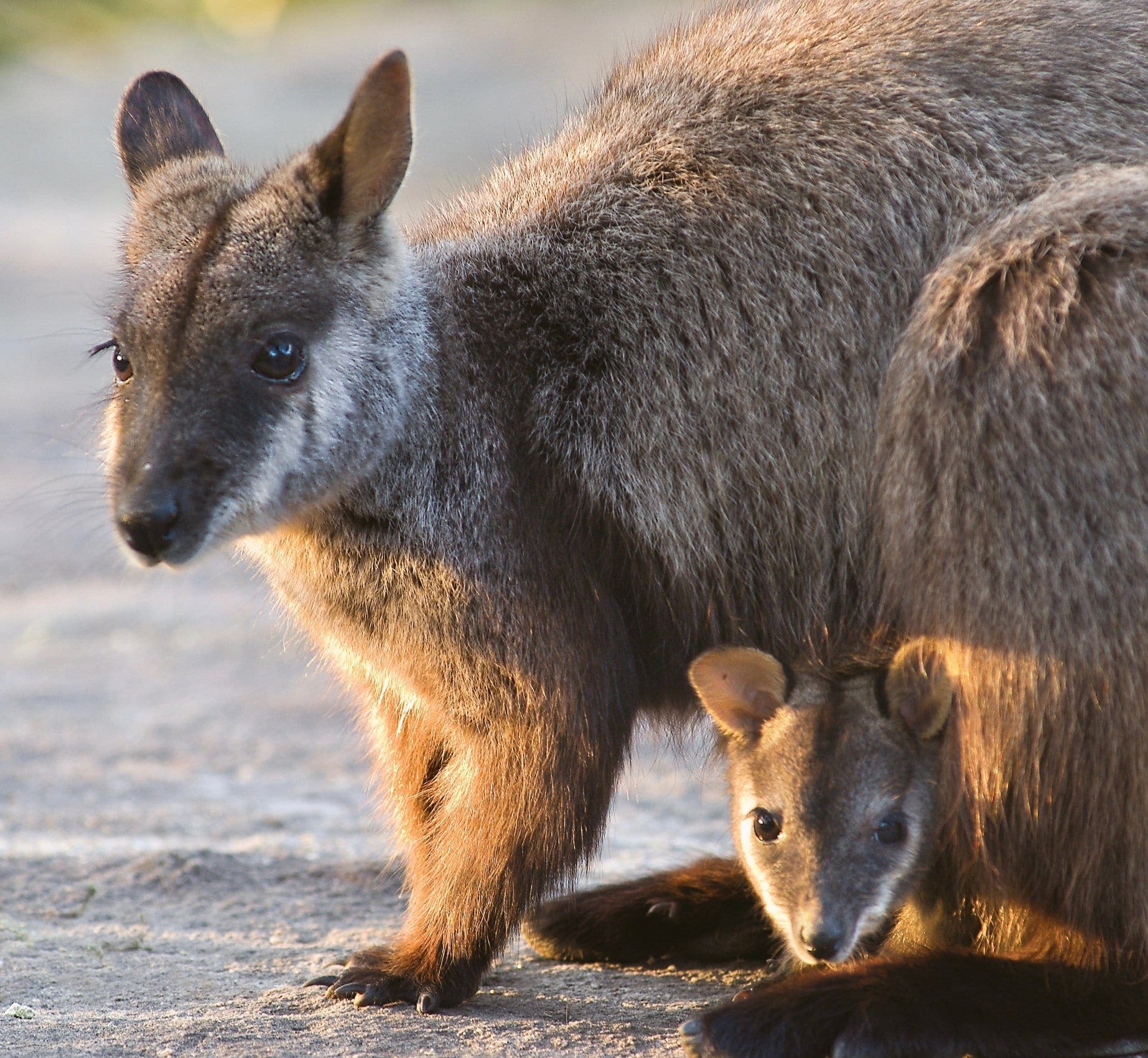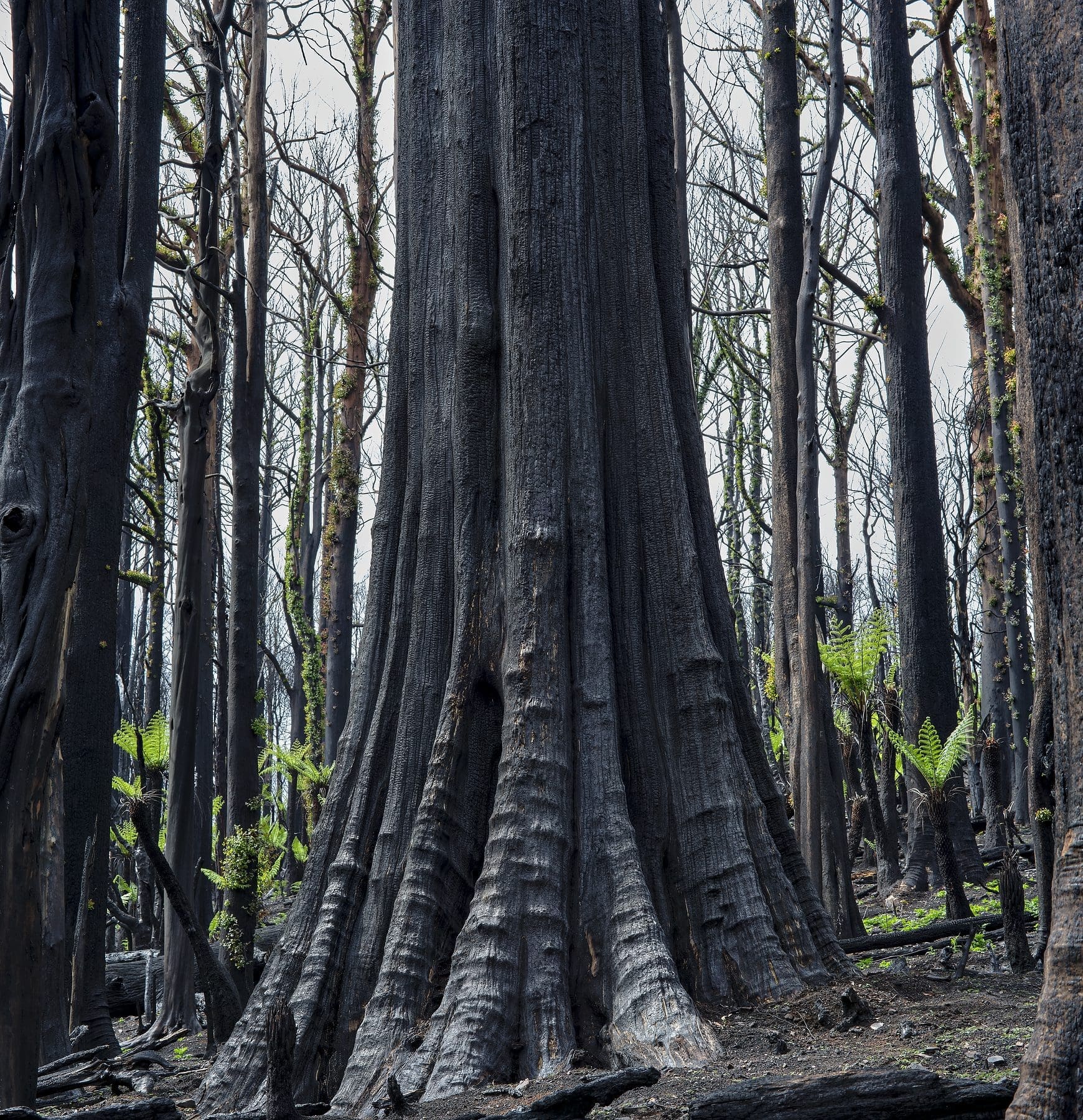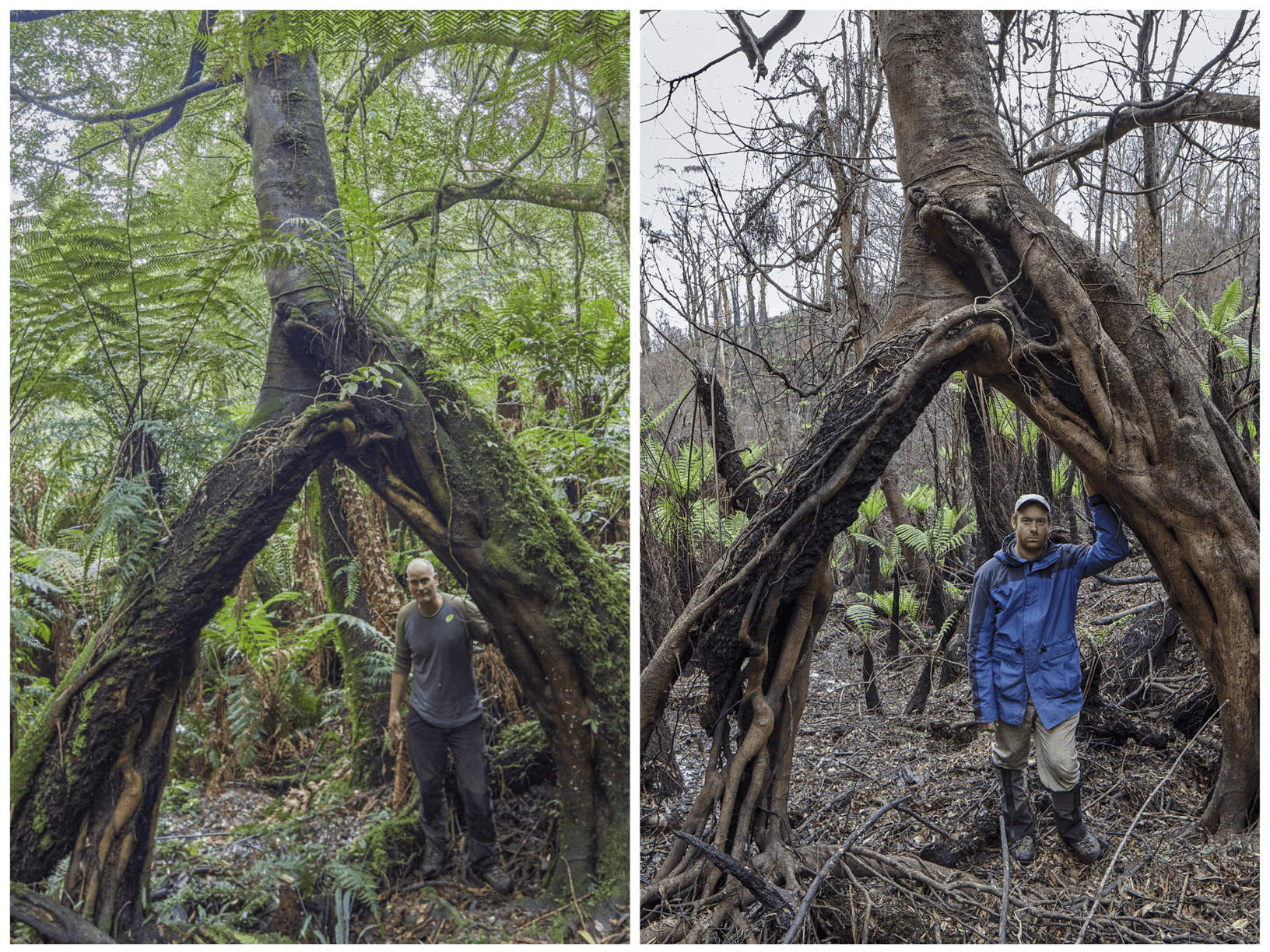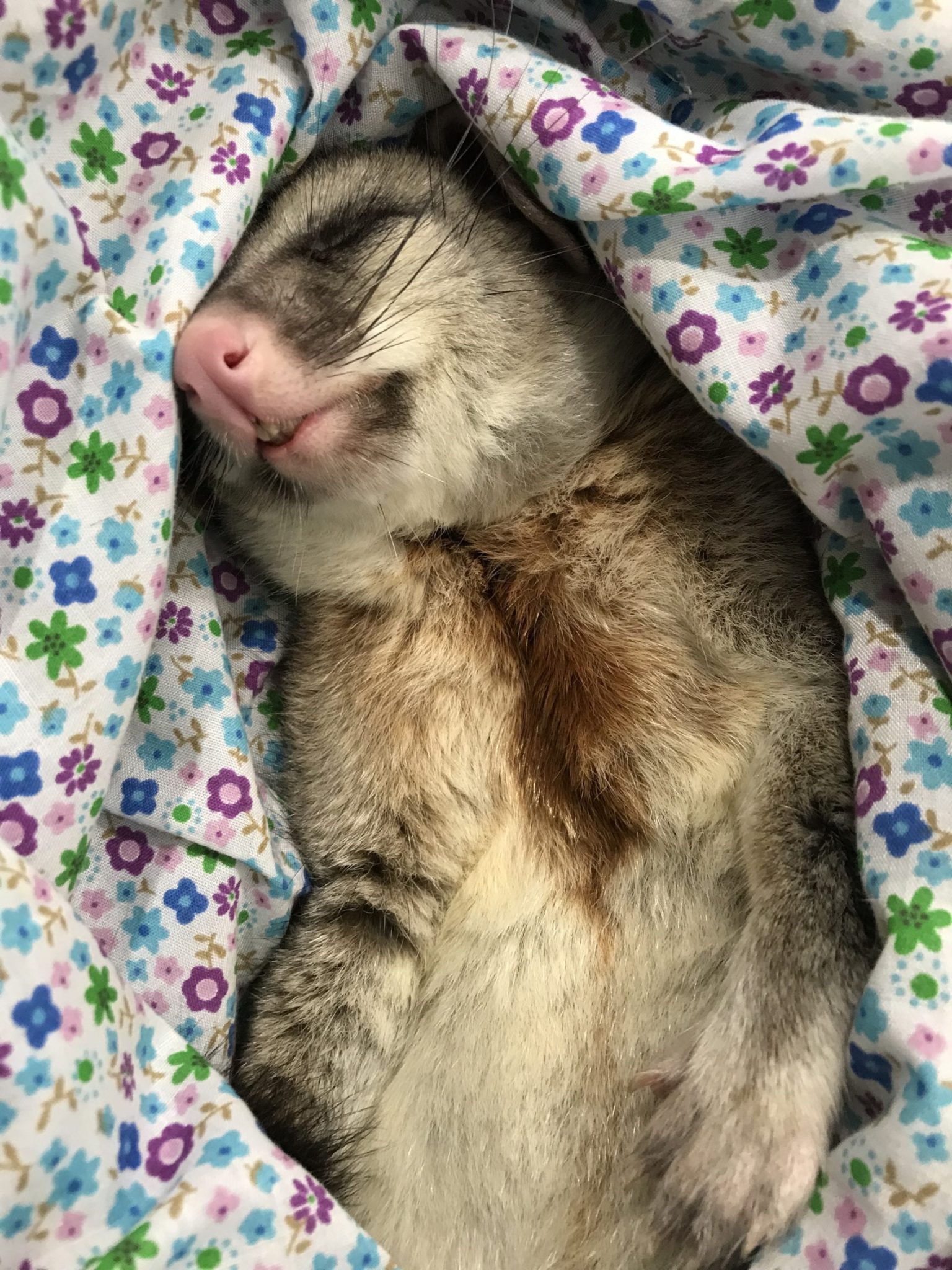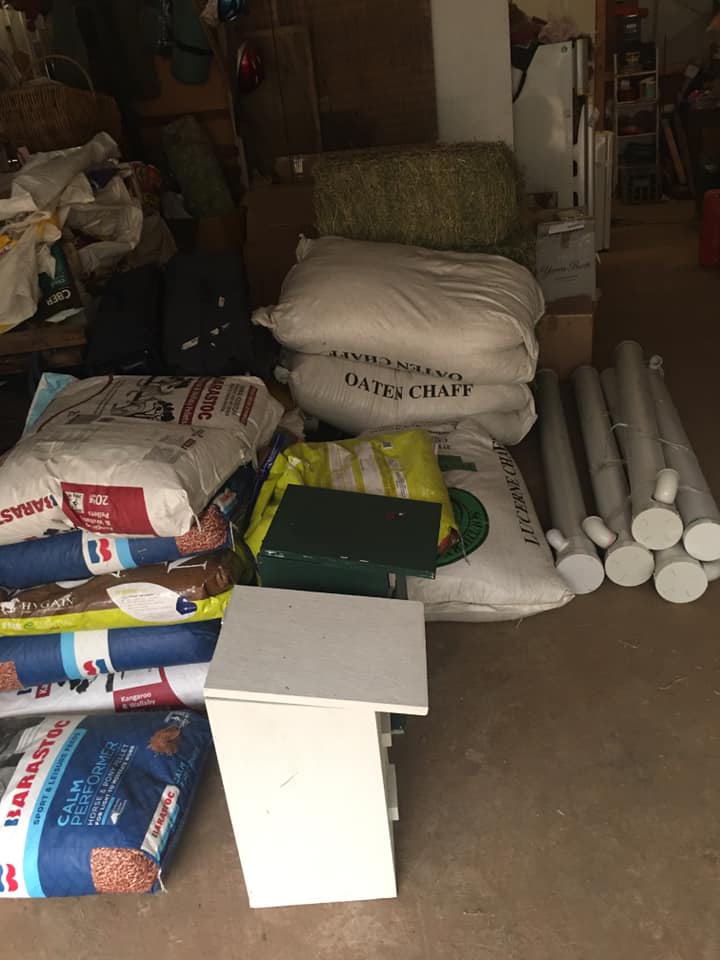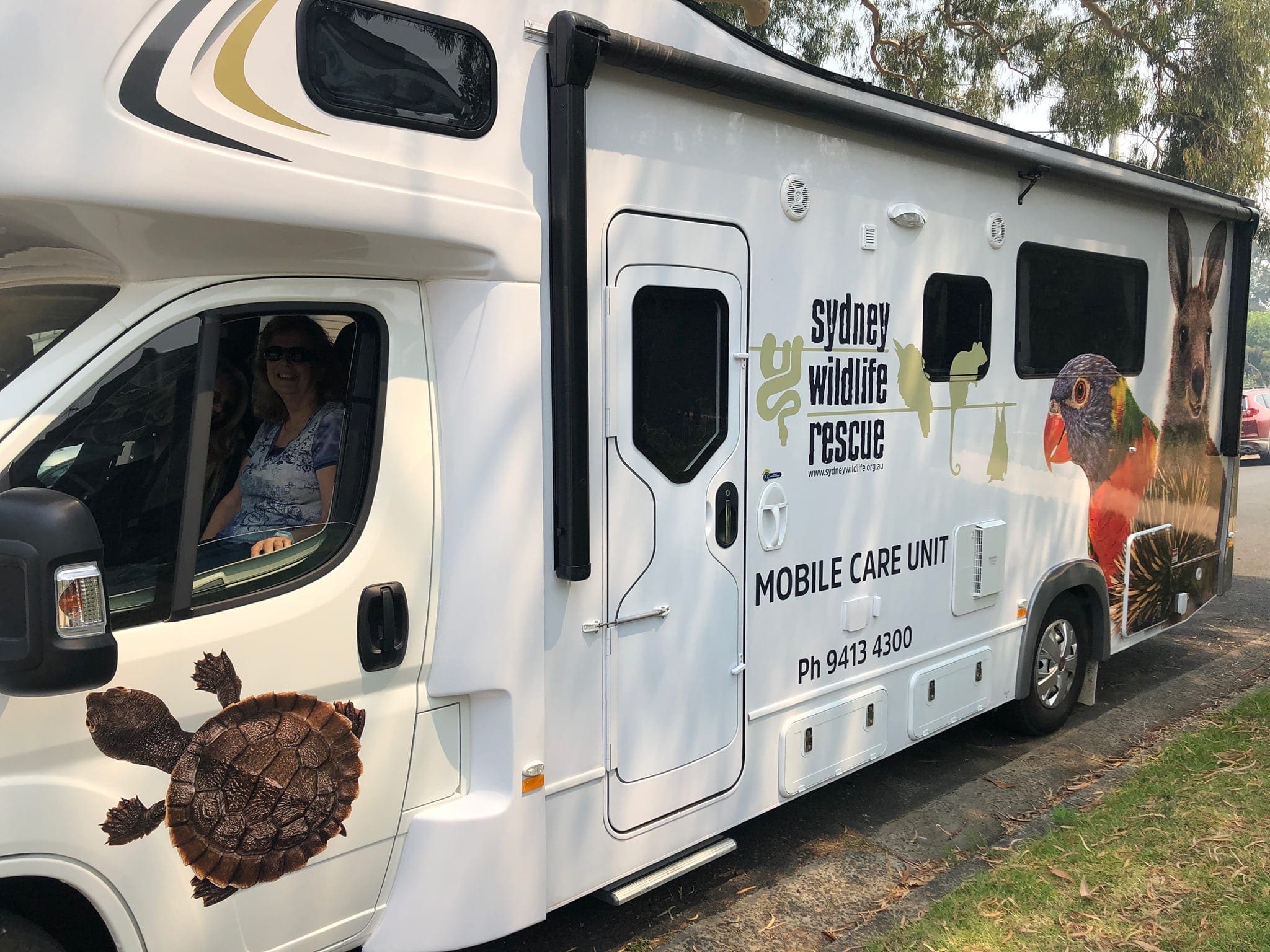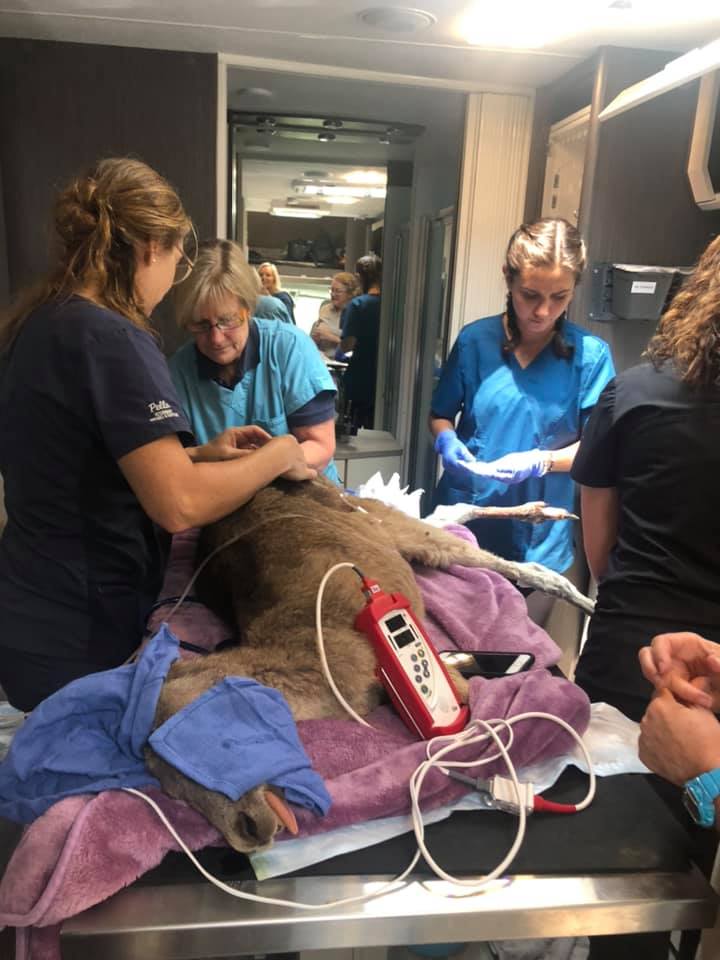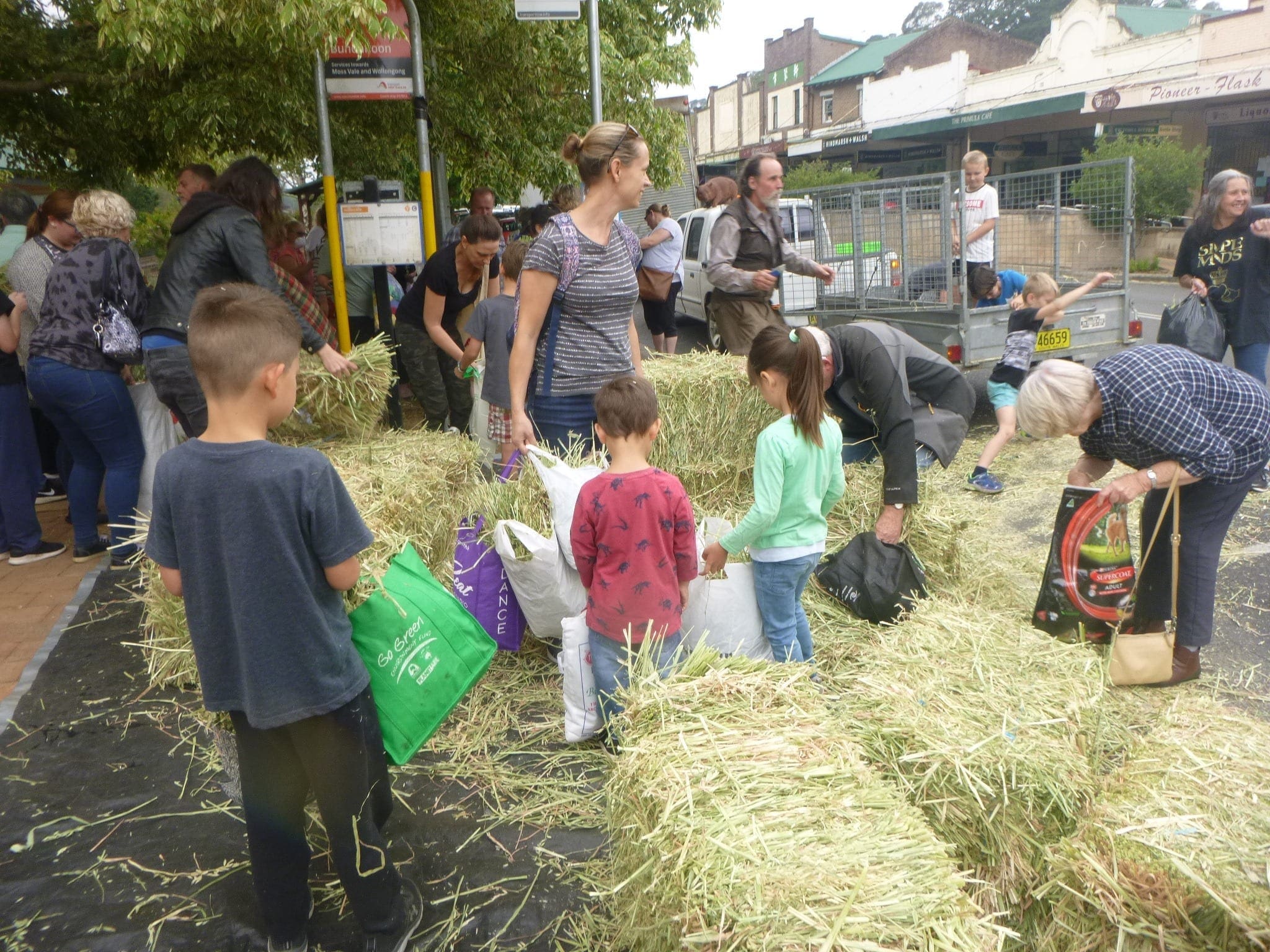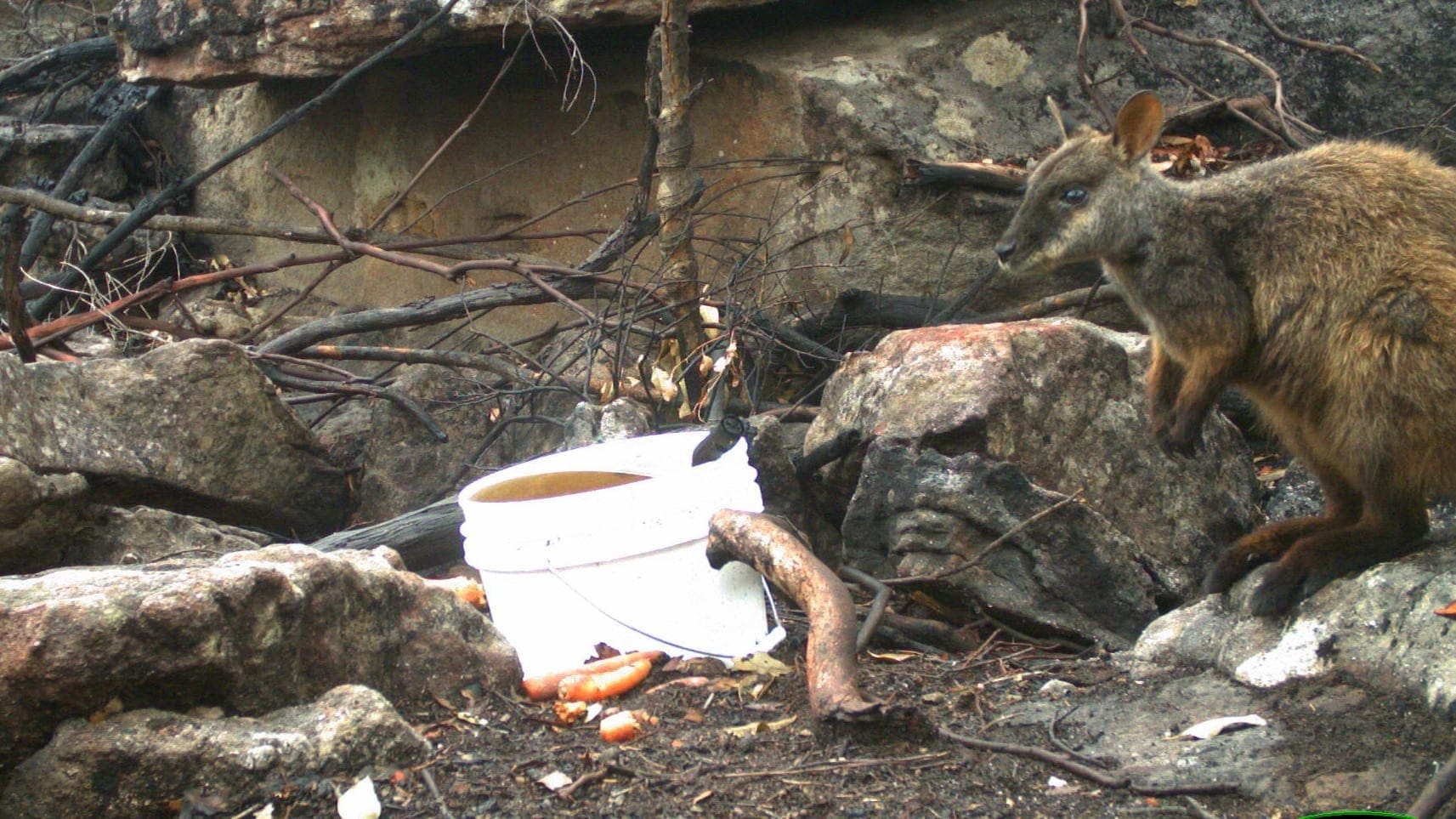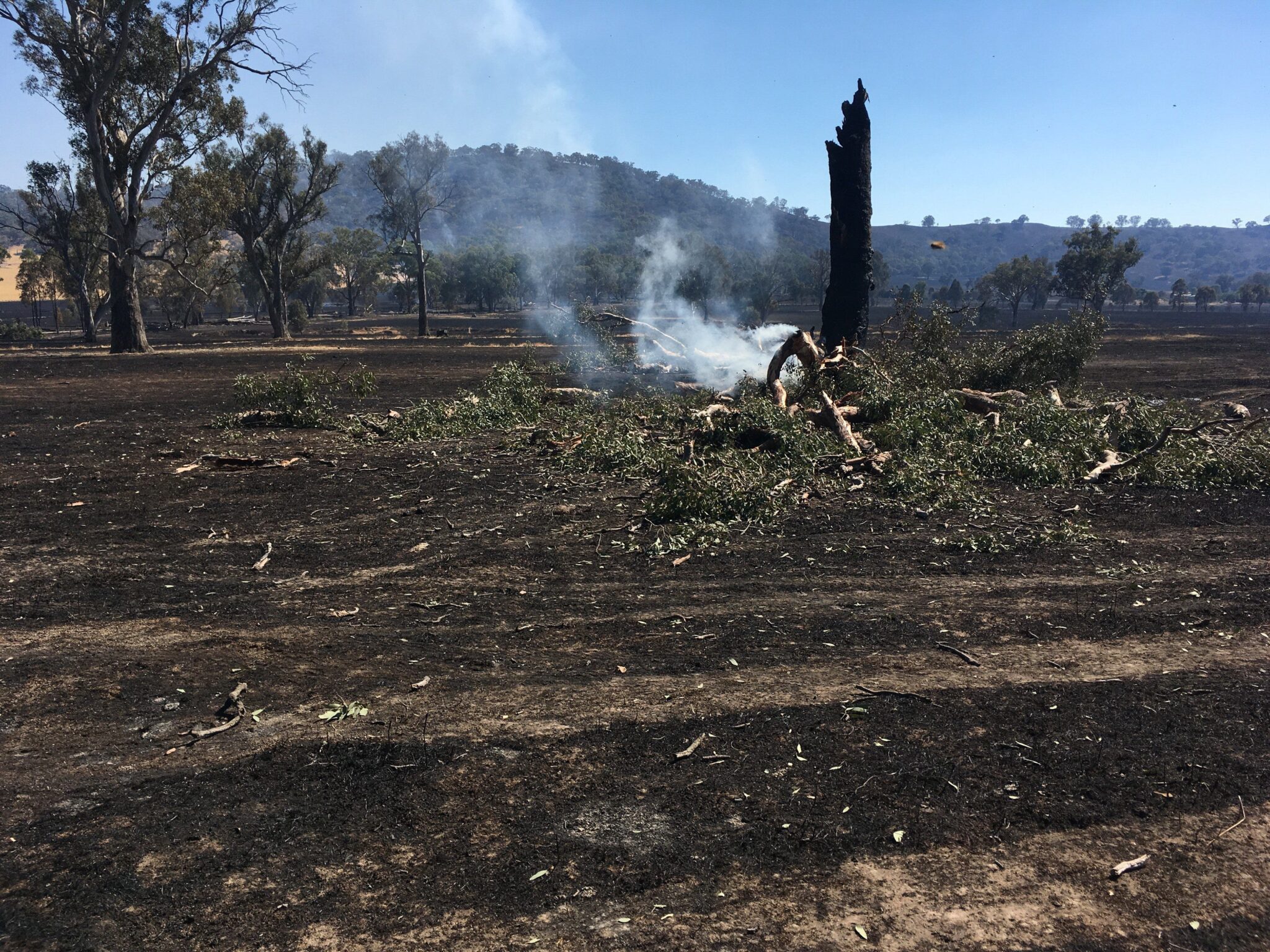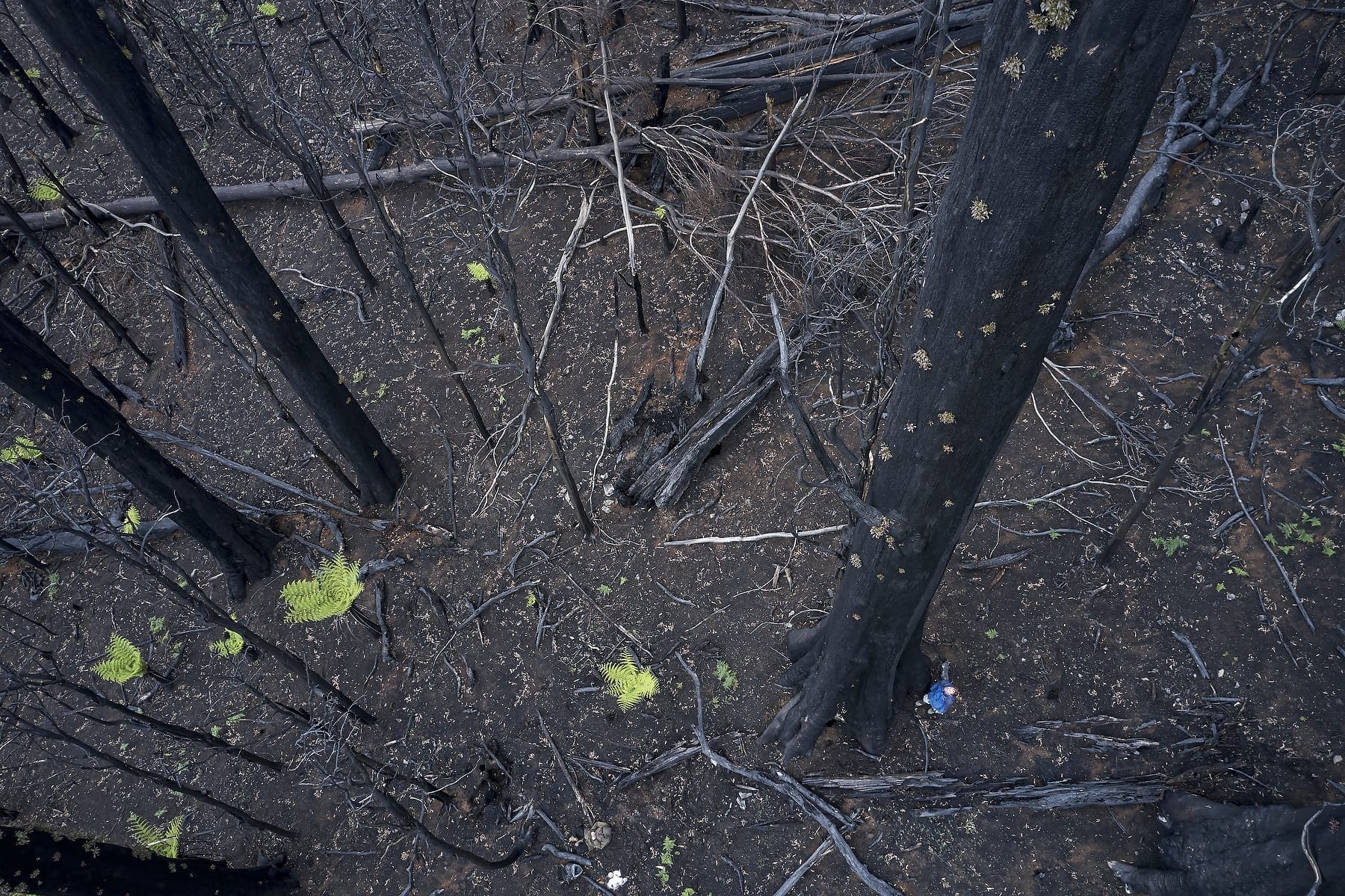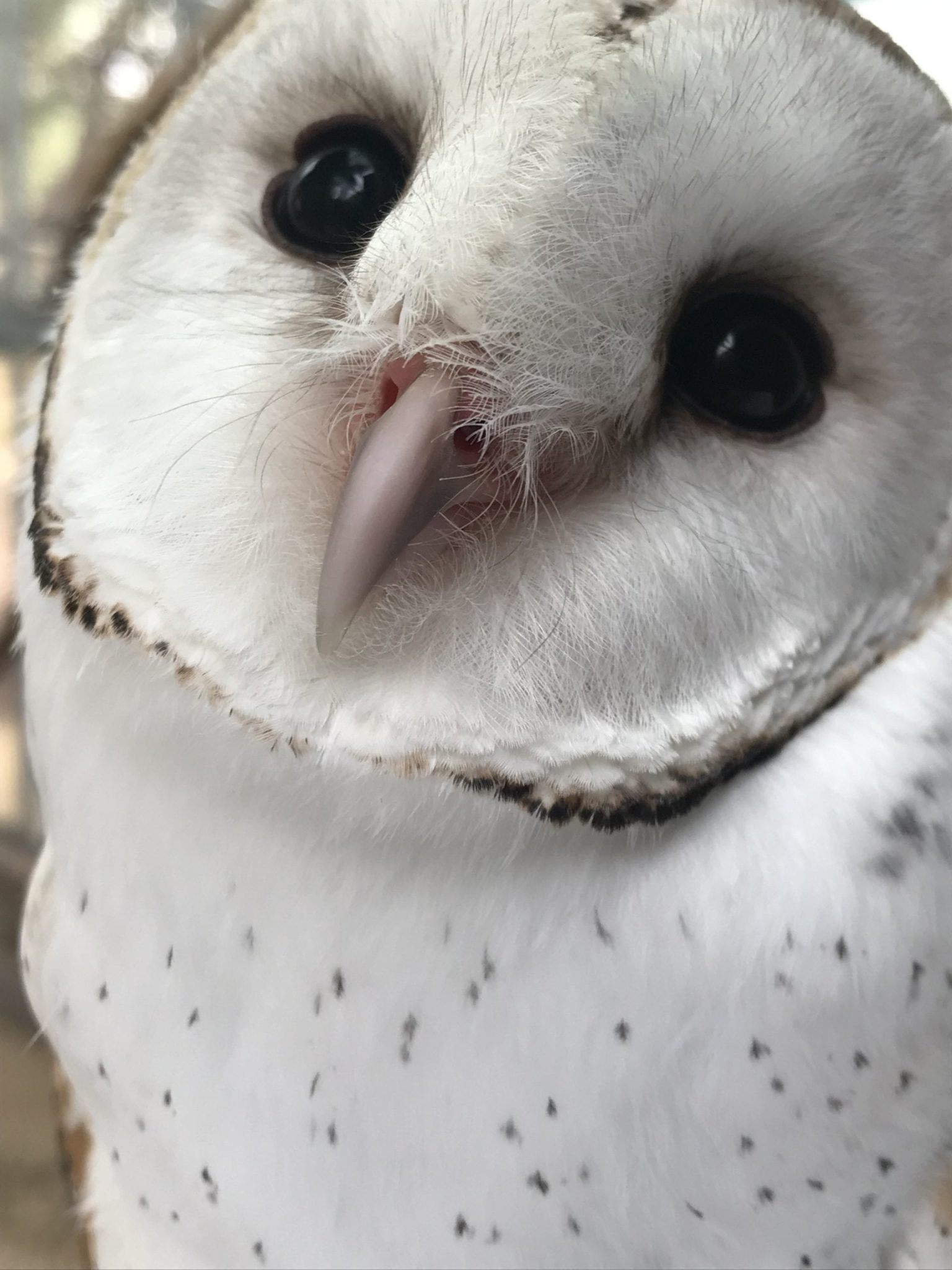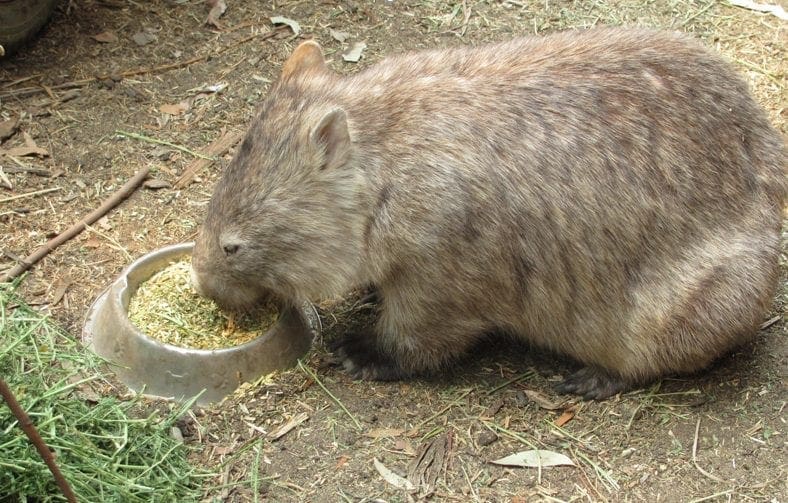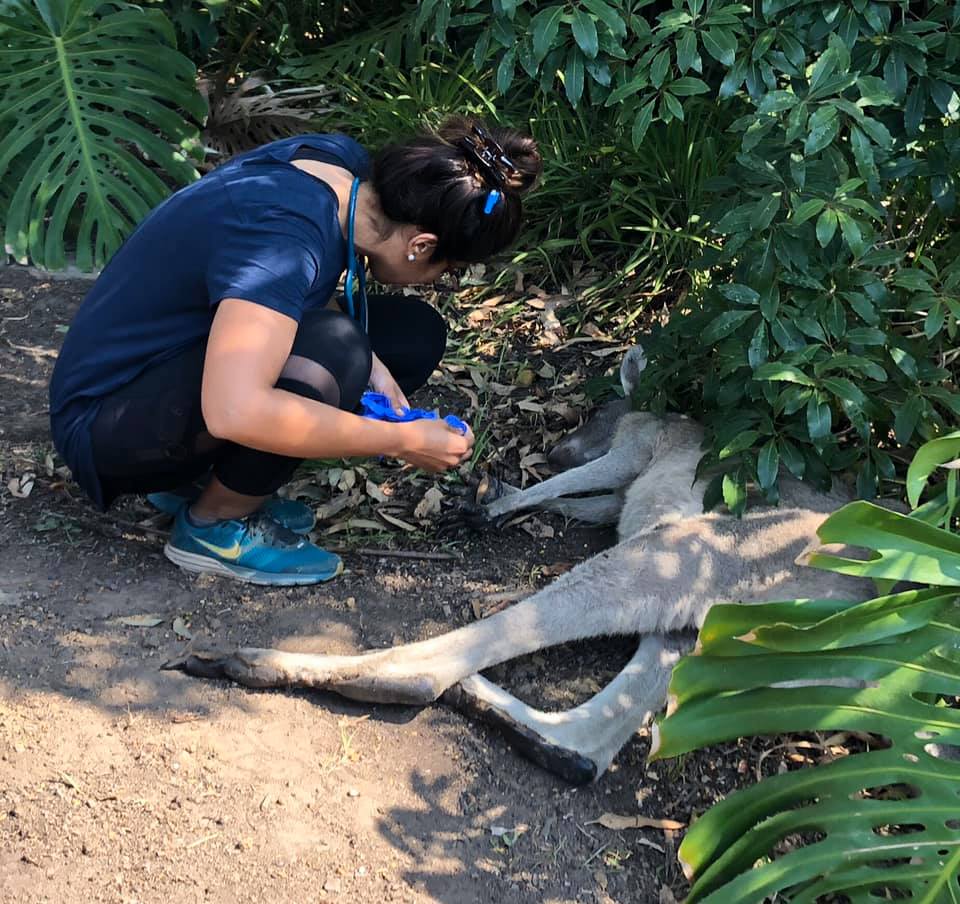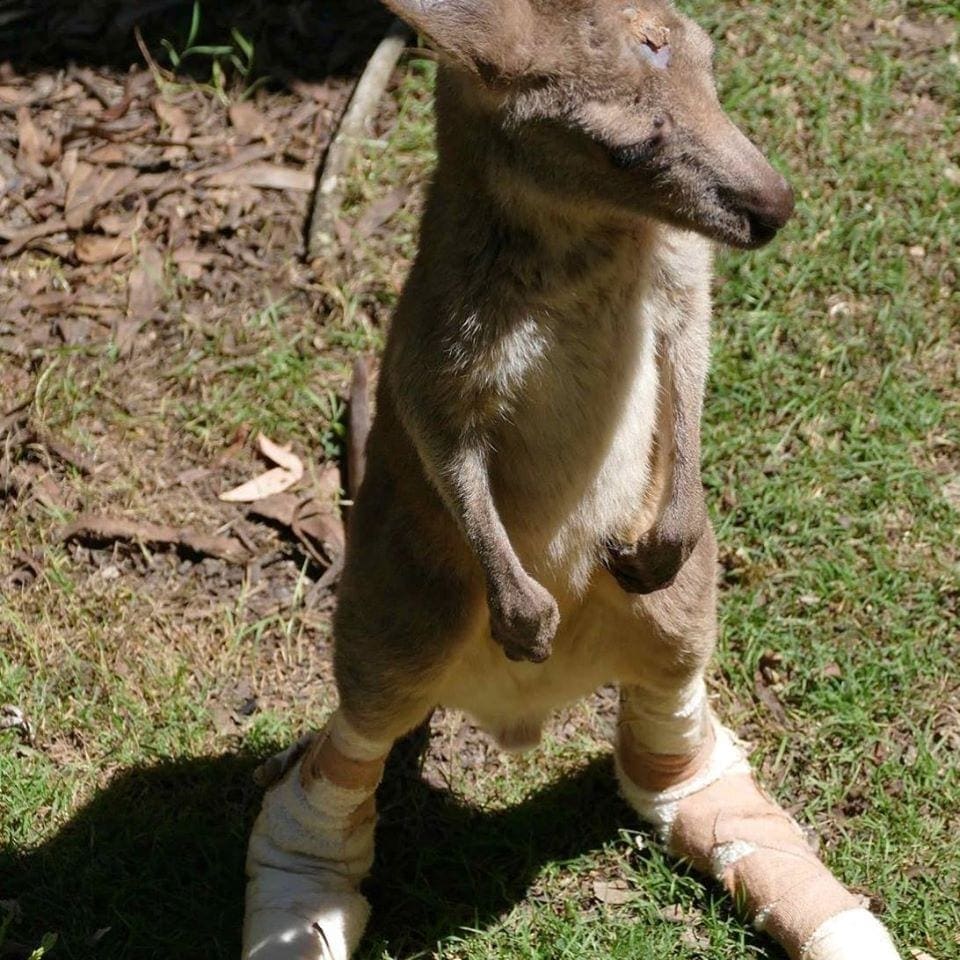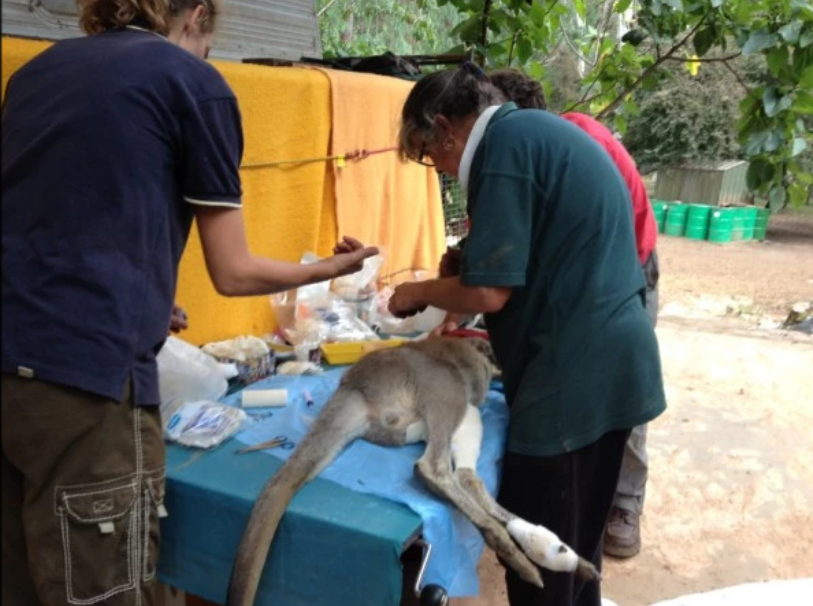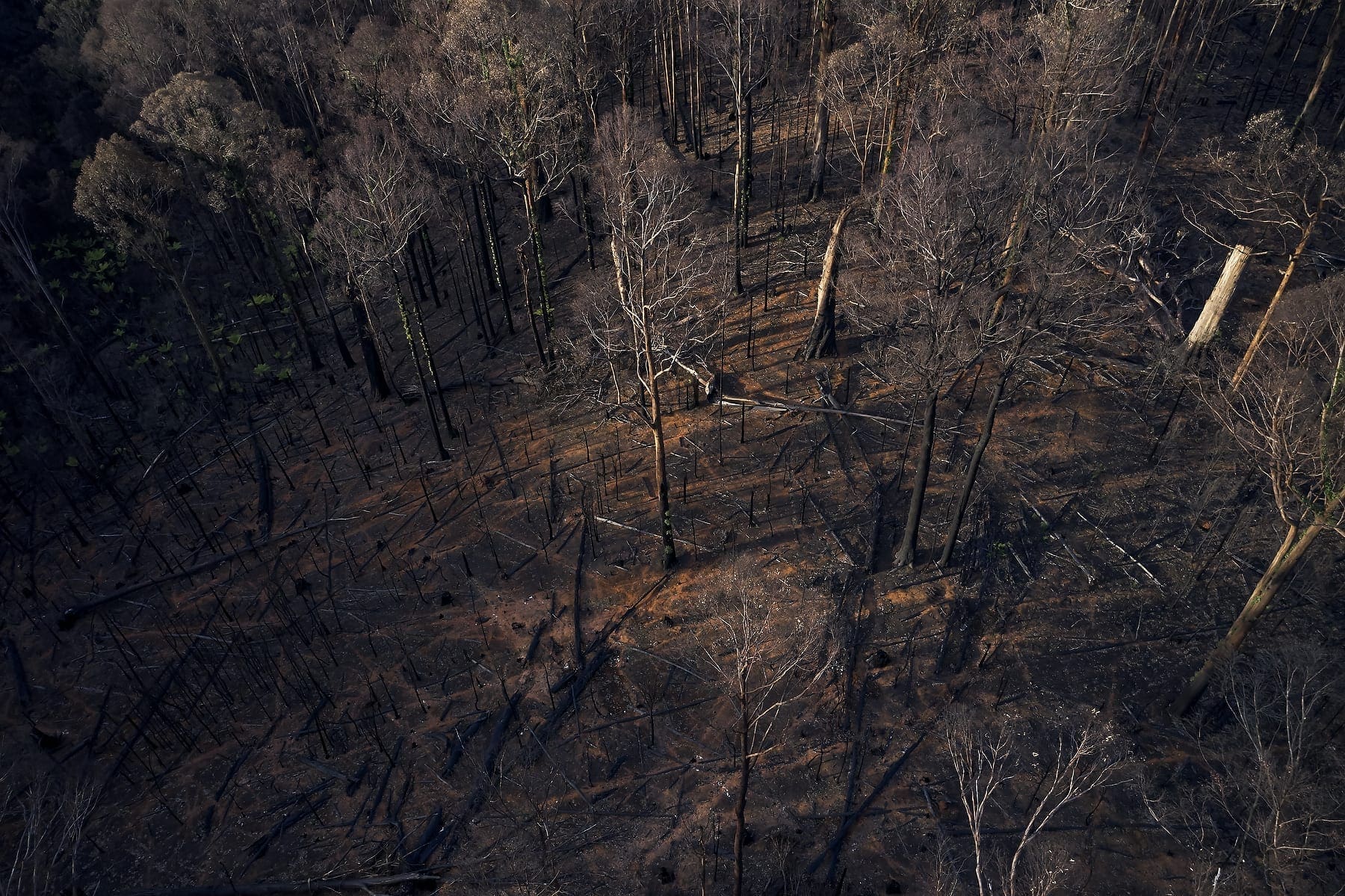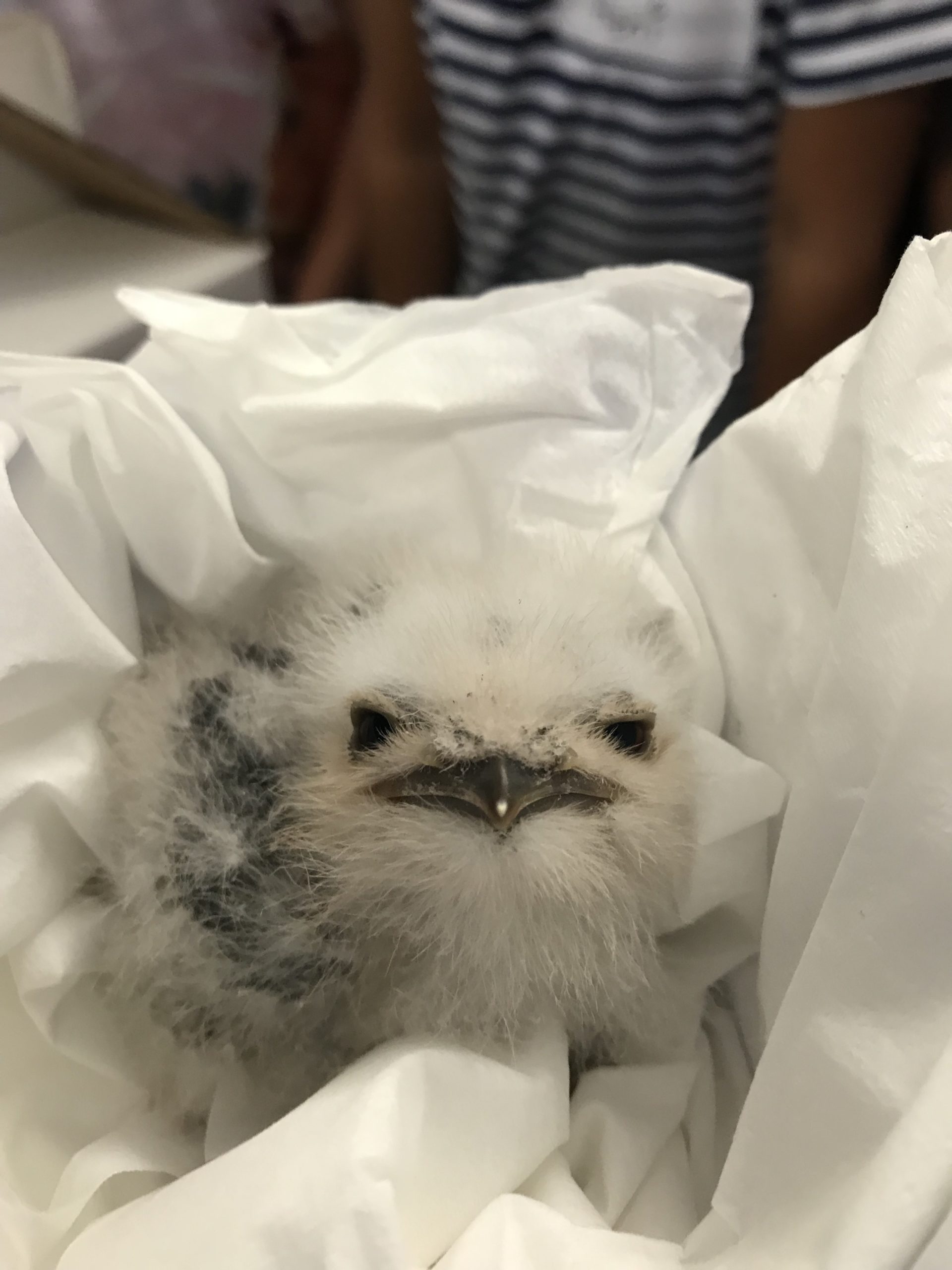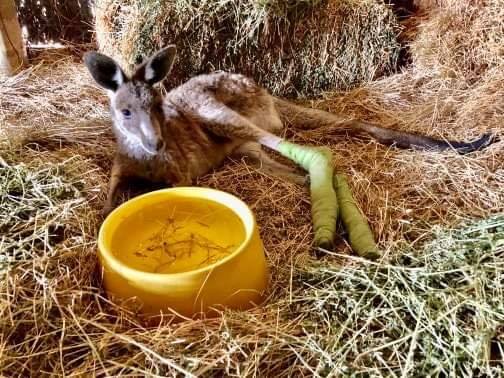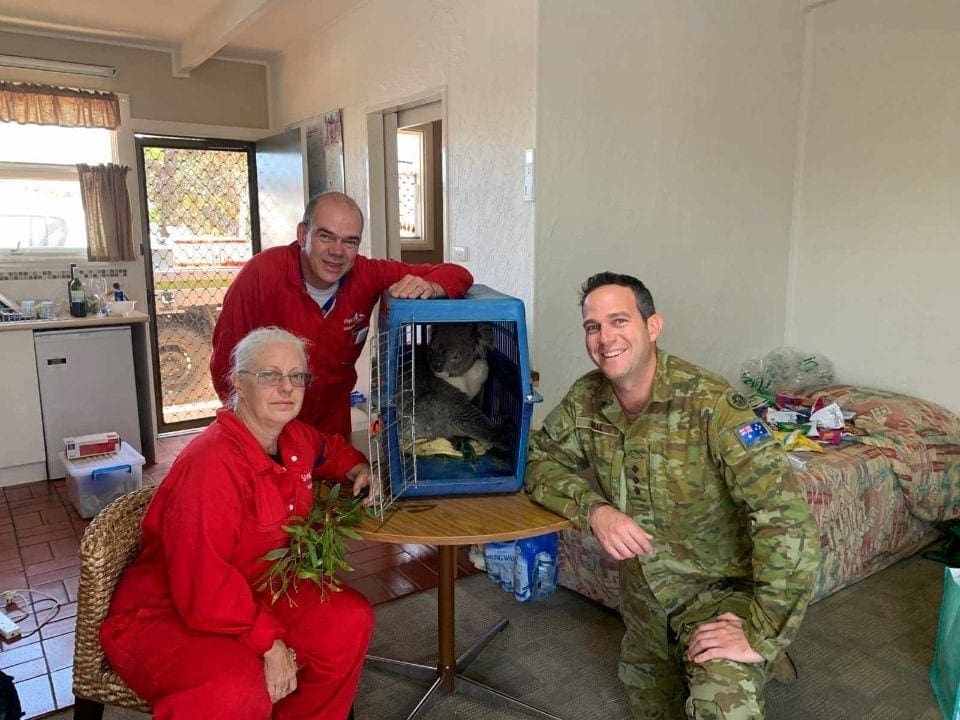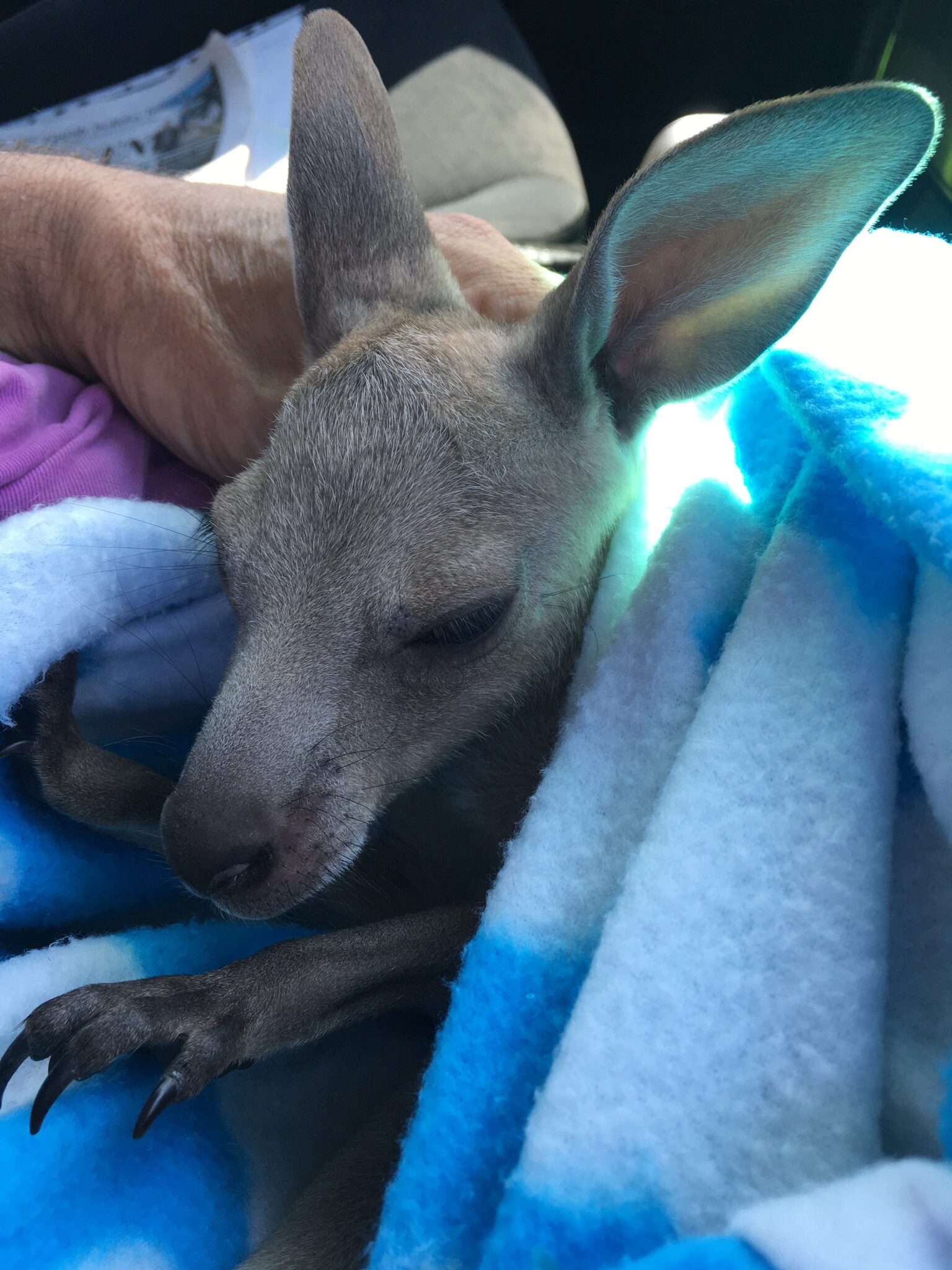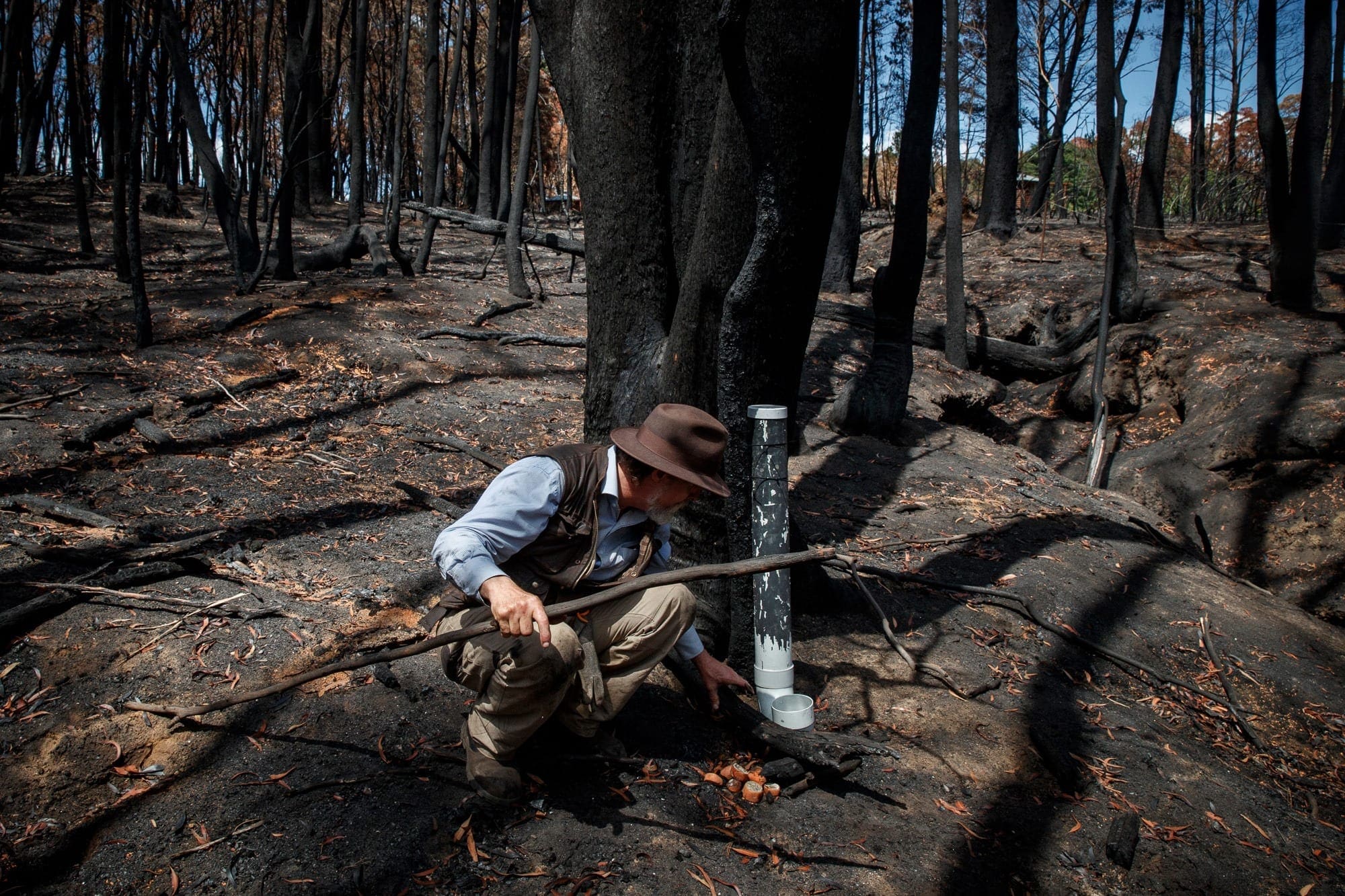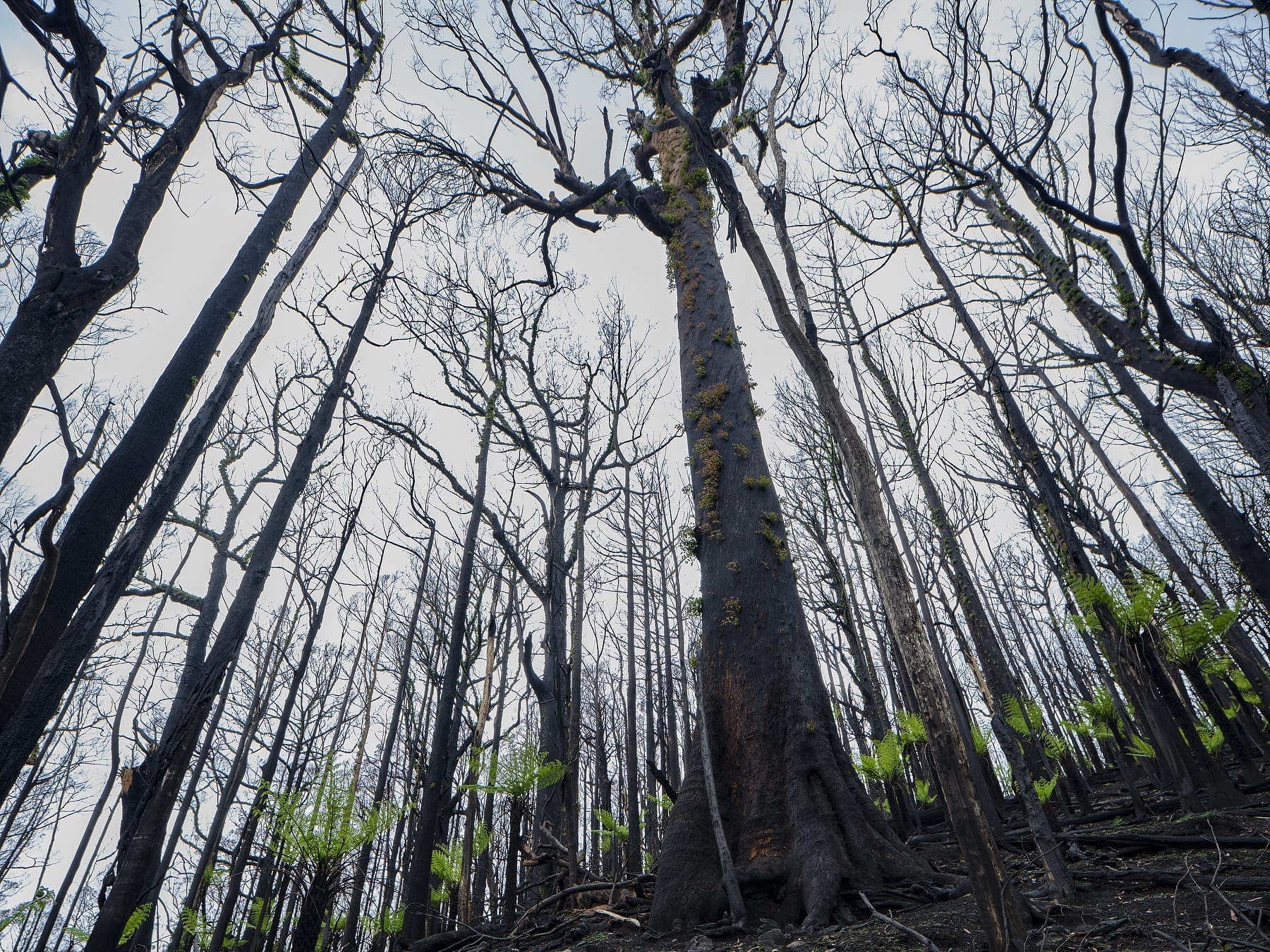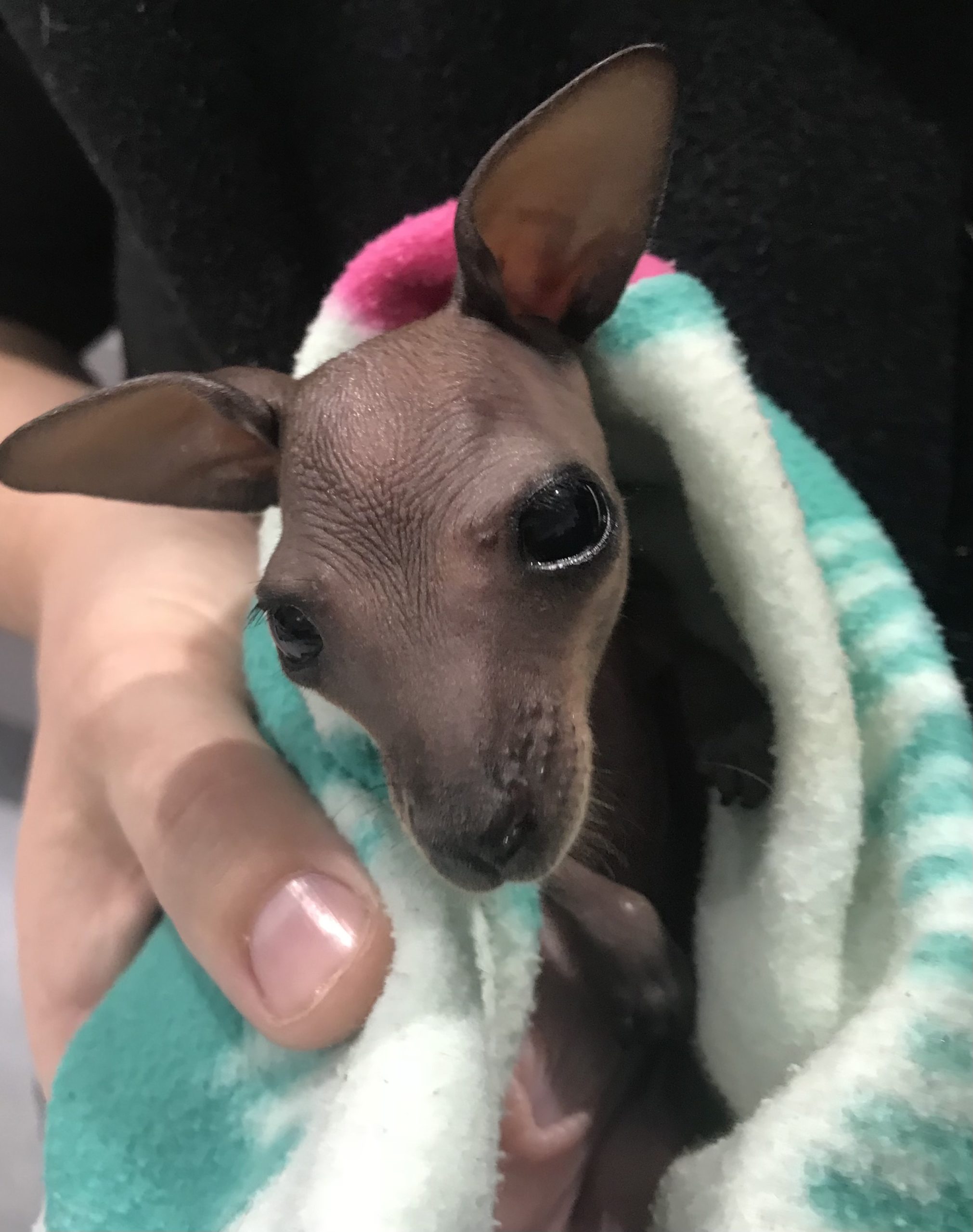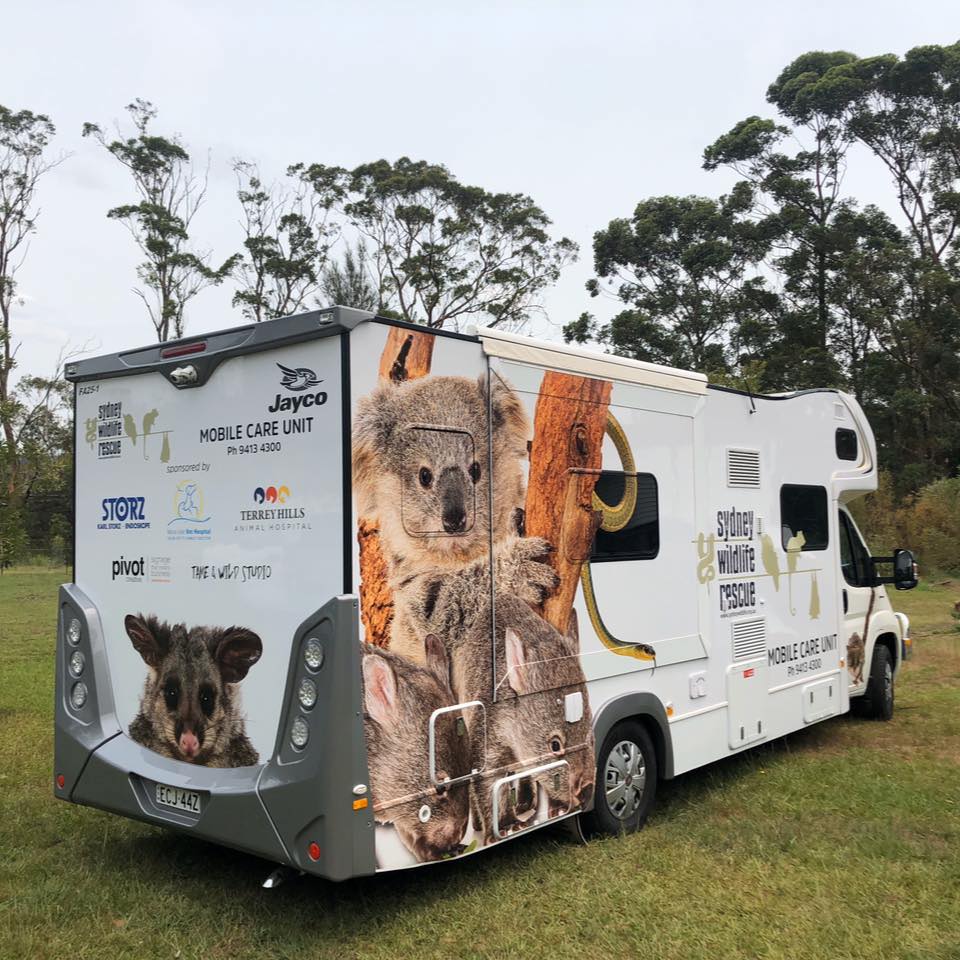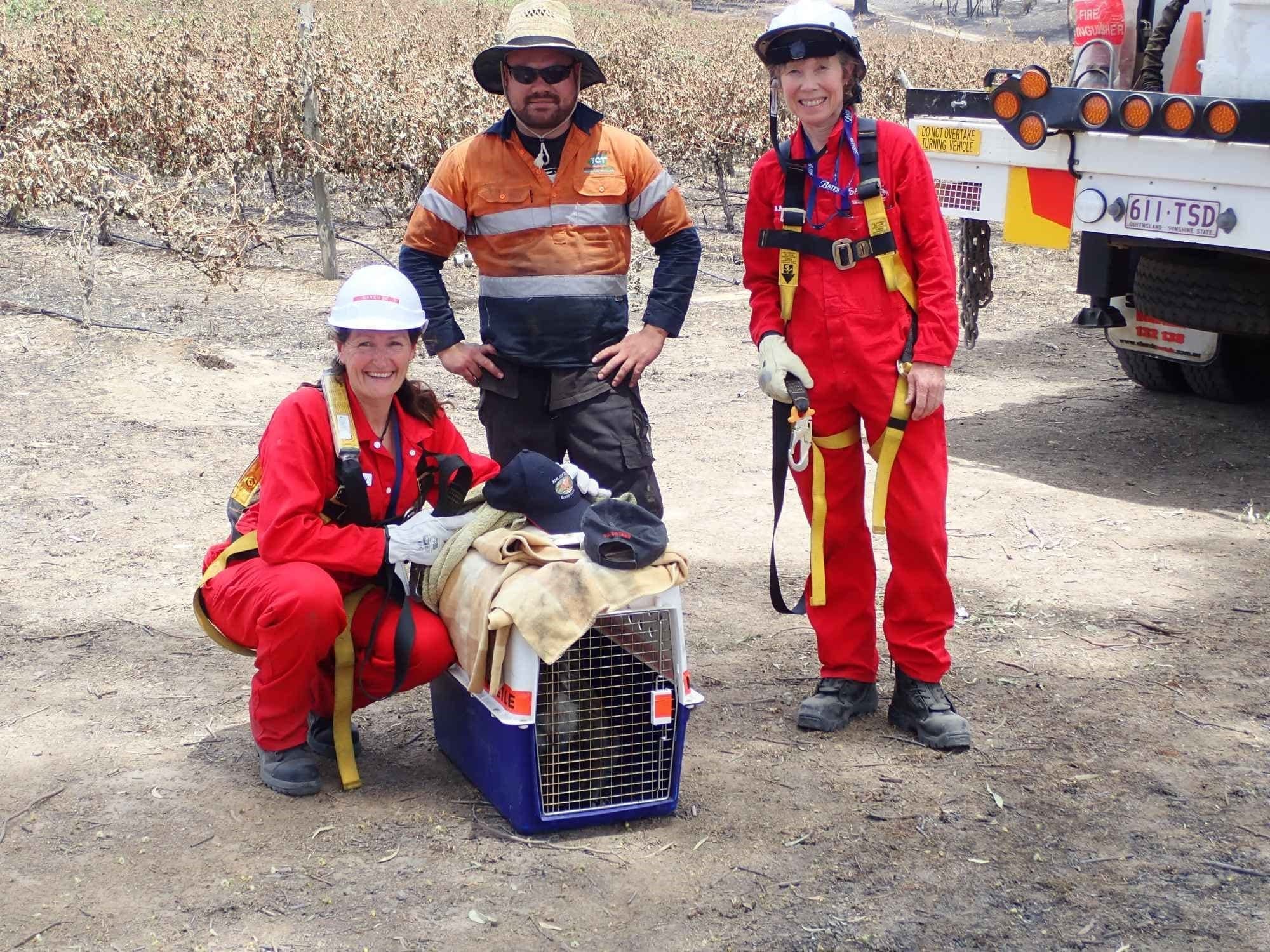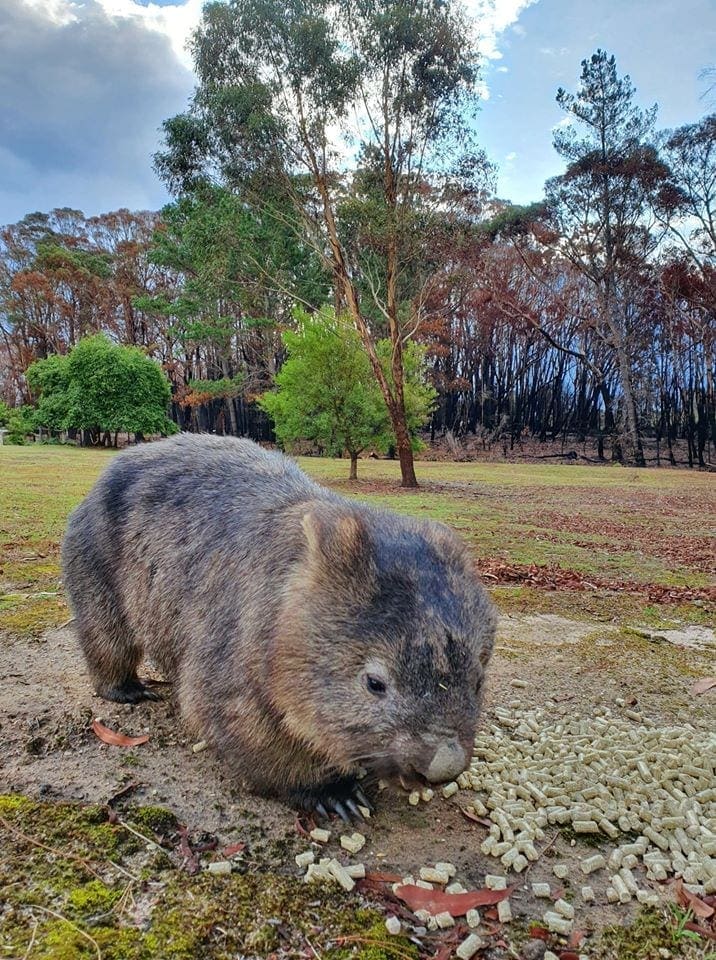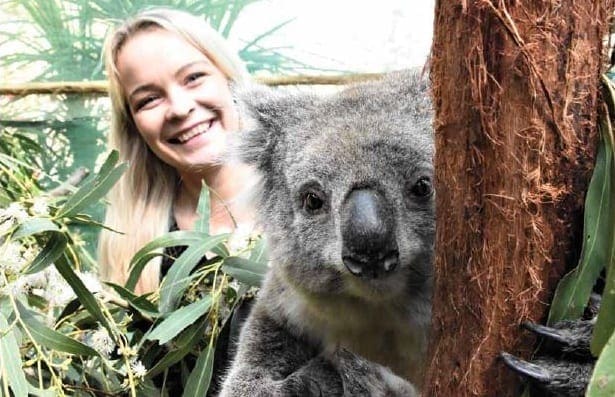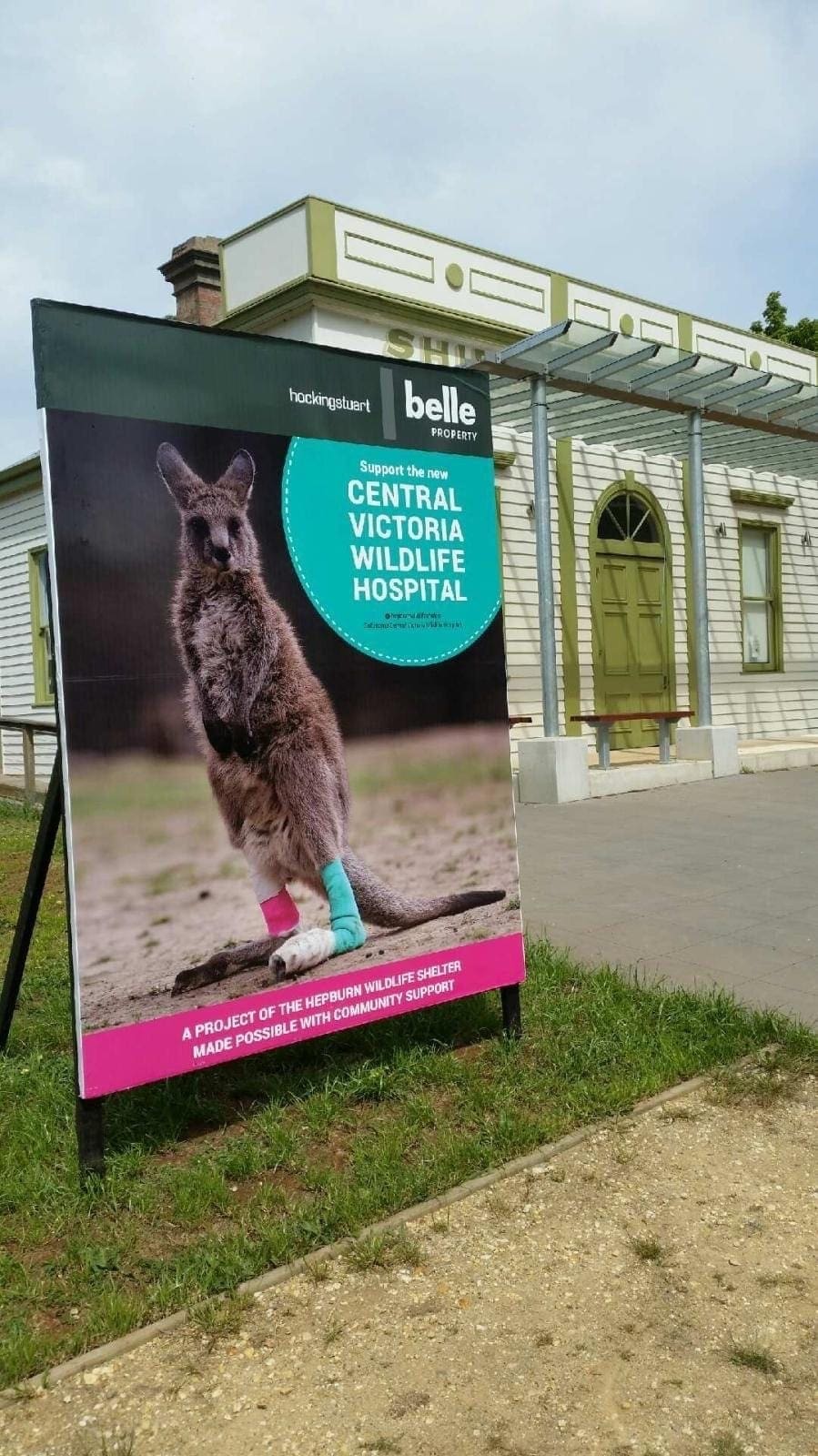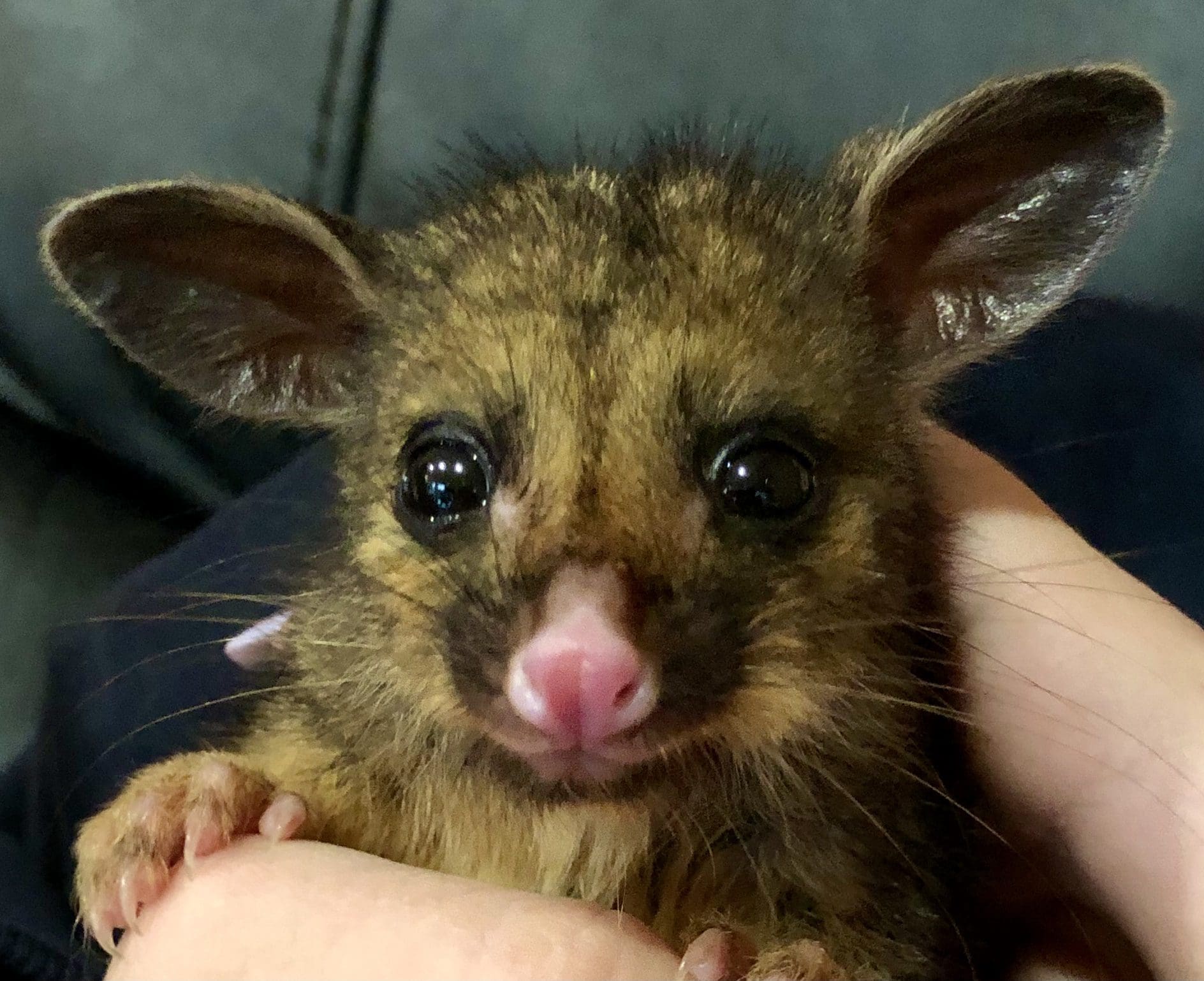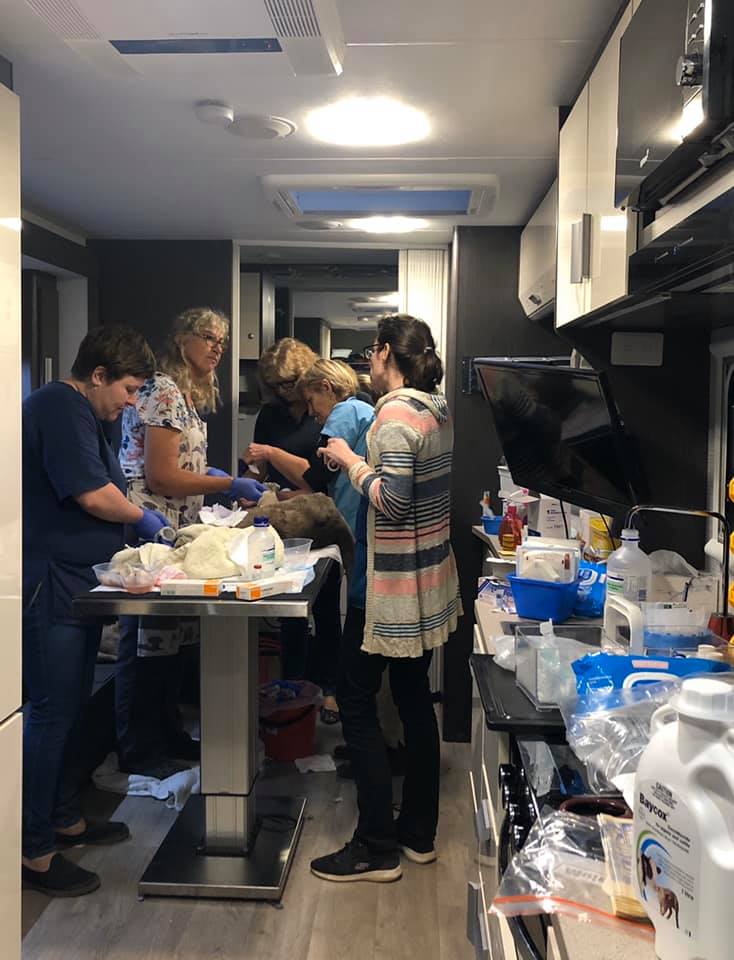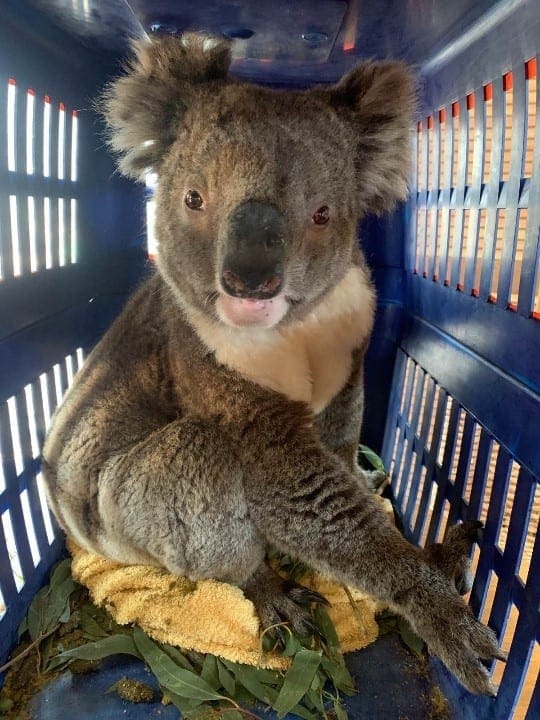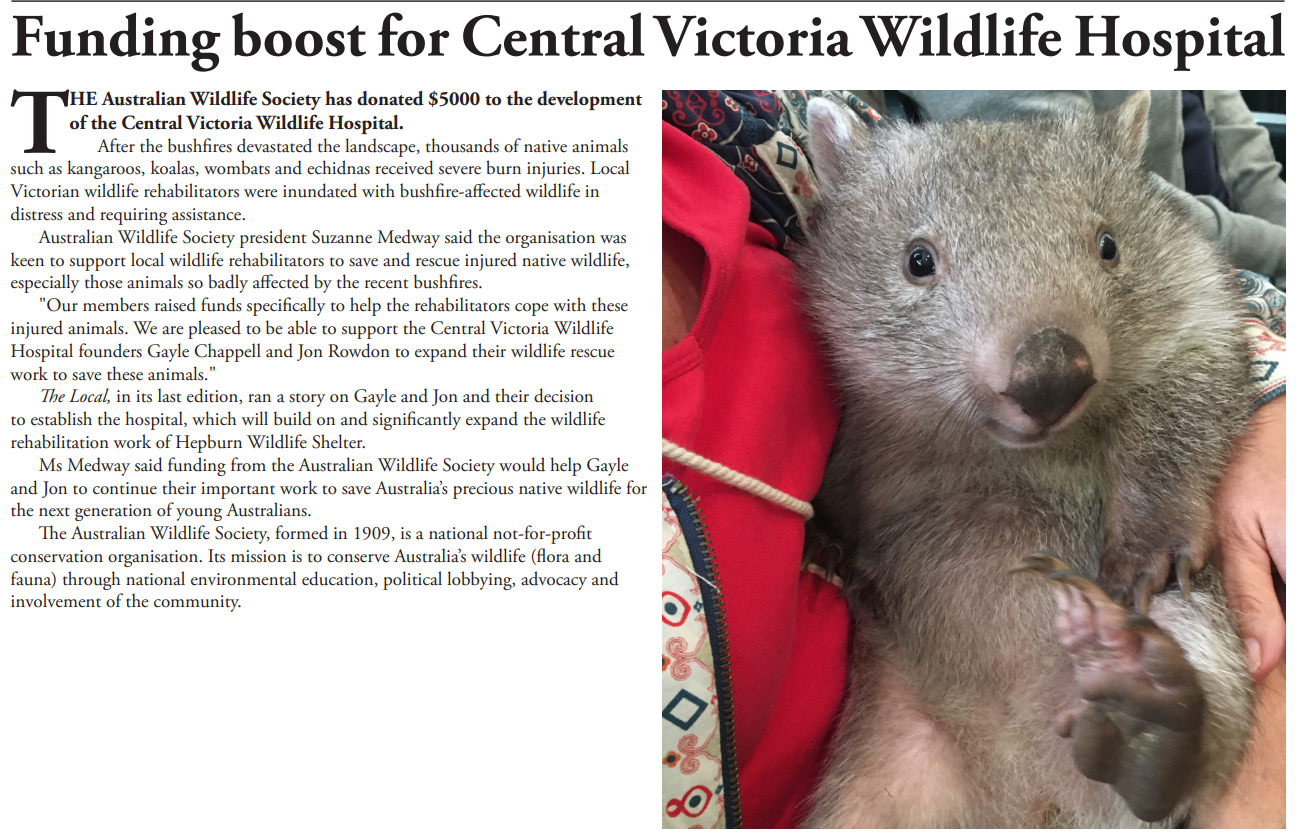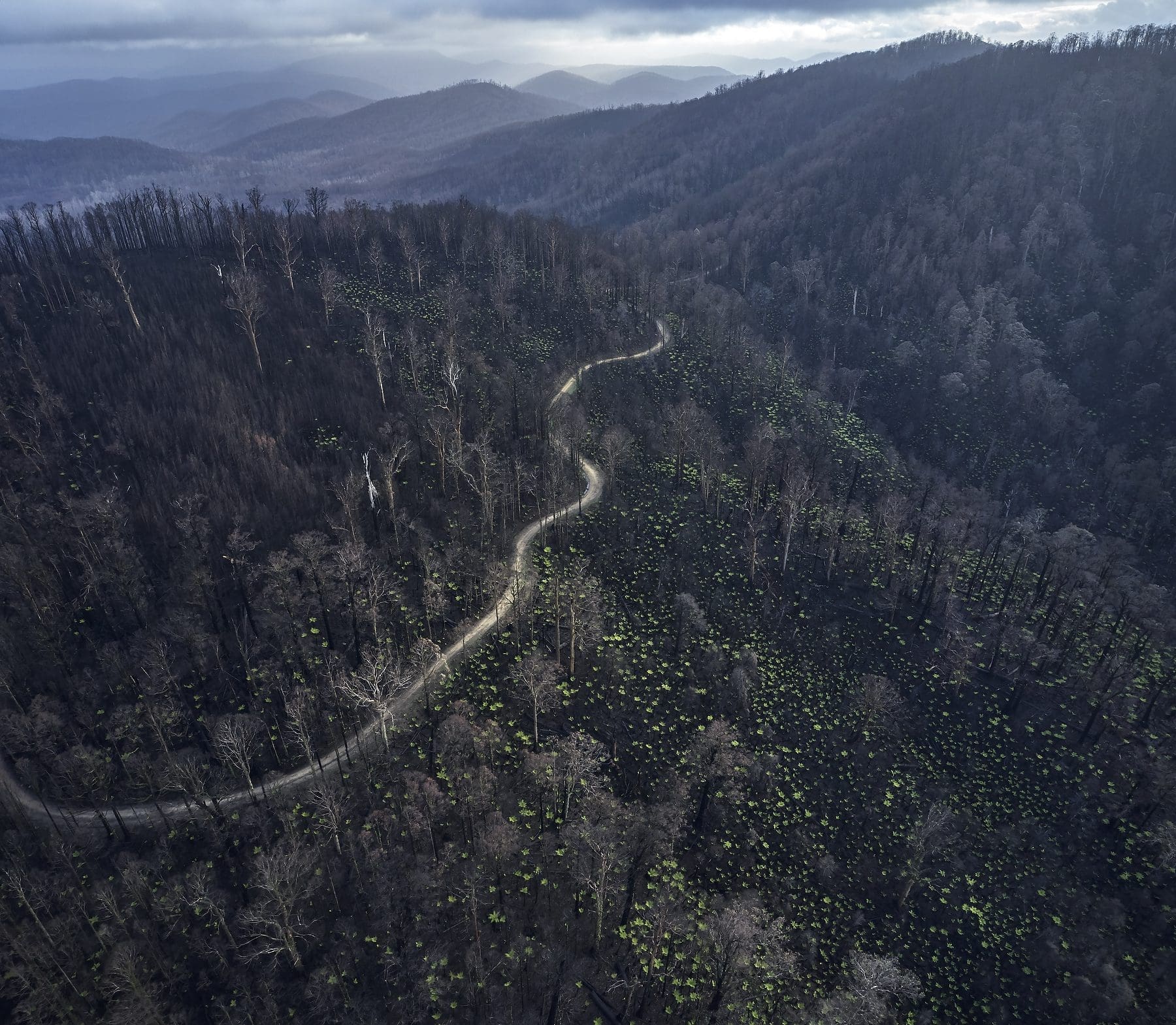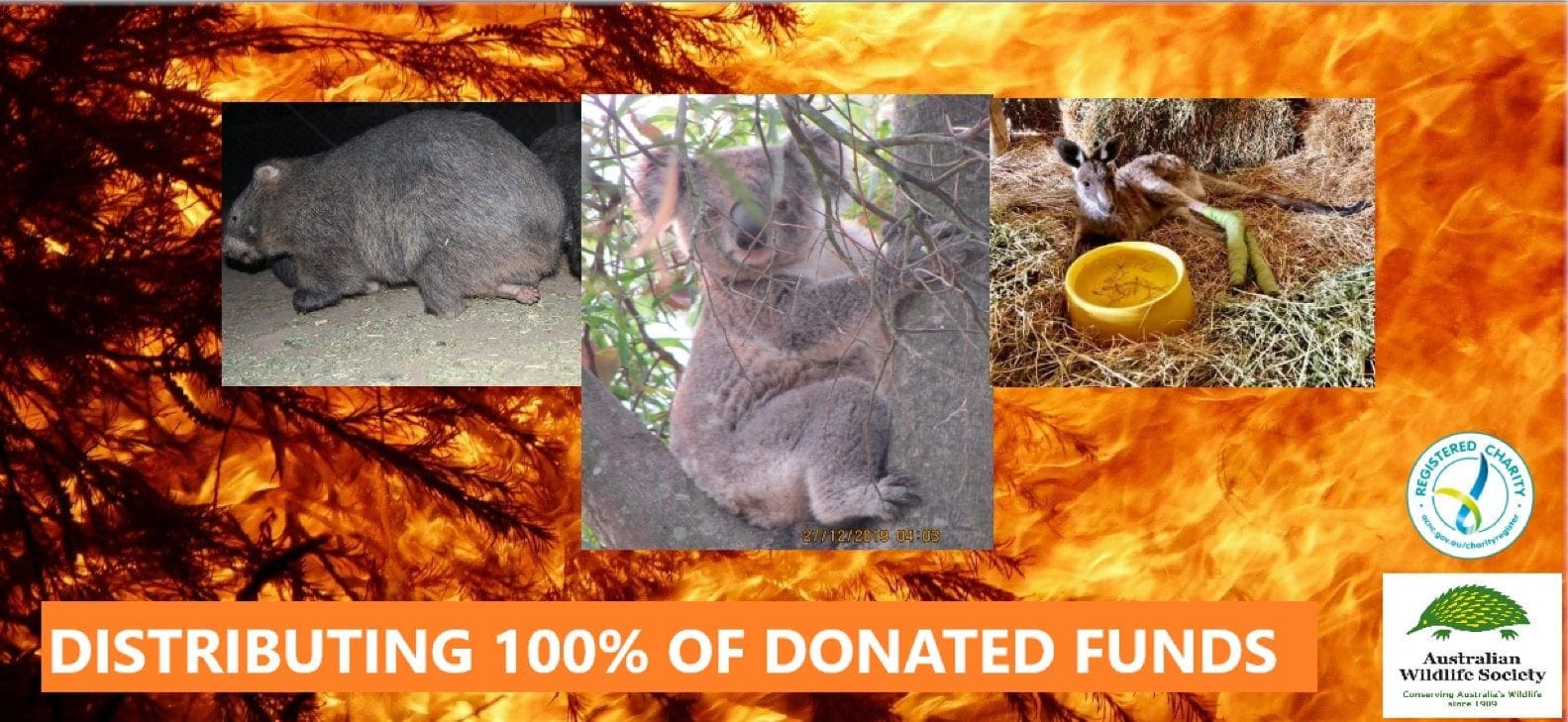
Helping wildlife affected by bushfires
The scale and severity of bushfires that swept through the country in 2019-2020 and again in 2021 (in Western Australia) tested the resources of many wildlife rescue groups. Australian Wildlife Society wanted to do more to help wildlife rescue groups treating bushfire-affected wildlife in New South Wales, Victoria, South Australia, and Western Australian and therefore founded a campaign called 'wildlife affected by fires'. Thank you to everyone who donated to help Australia's wildlife.
Account Name: Wildlife Preservation Society of Australia trading as Australian Wildlife Society
Bank: Commonwealth Bank Of Australia
BSB: 062-235
Account: #10696157
Description: Wildlife in fires
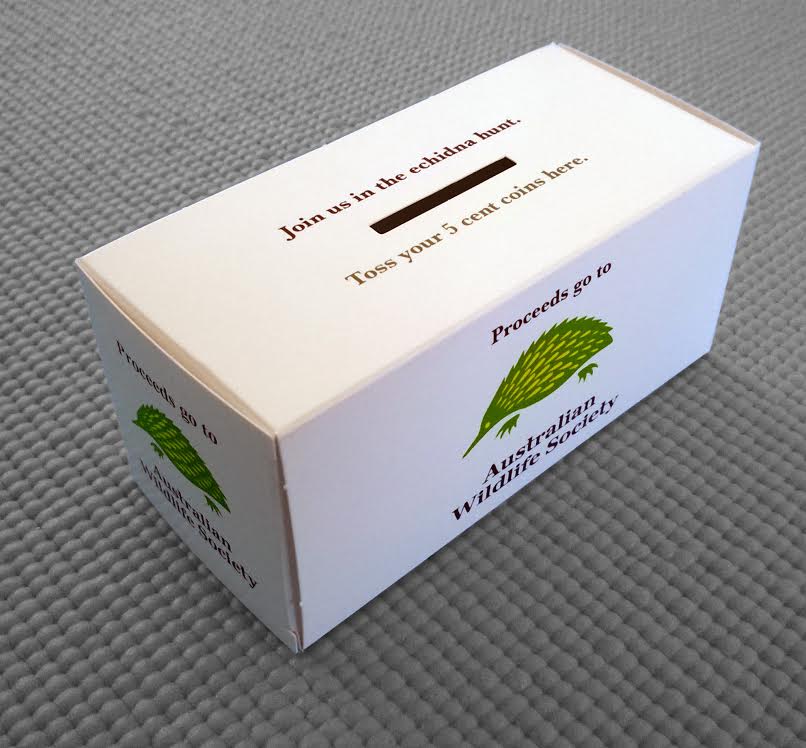
Wildlife rescue groups we supported
100% of donations were distributed to the following wildlife rescue groups that work around the clock to rescue and rehabilitate native wildlife affected by the bushfires.
New South Wales
Cedar Creek Wombat Rescue Inc & Hospital is dedicated to rescuing not just orphaned joey wombats but also sub-adults and adults that are in need of medical care, whether it be from accident, injury, mange or the result of extreme weather events. Along with wombats, Cedar Creek Wombat Rescue cares for many other native animals with the focus being on wildlife that are in need of more than routine care to get them to the point of release. Over 38 years ago, Roz and Kev Holme recognised the plight of the bare nosed wombat. The loss of habitat, road hazards, and debilitating sarcoptic mange have all contributed to the steady decline of the common or bare-nosed wombat (Vombatus ursinus). The Society greatly admires Cedar Creek's work in helping to conserve native Australian wildlife, especially during Australia's bushfires.
The Pridmore's are dedicated to wildlife conservation. Previously, they established Badger Ground Native Nursery at Rylstone NSW, supplying native plants from providence seed. Despite retiring from nursery life, they continue wildlife conservation efforts at Bardger Ground through their continued preservation of both flora and fauna. Donations provided to Mike and Sue were used to supplementary feed wildlife at Badger Ground Suffering enormously from the drought and fire conditions. Mike and Sue cared for about 70 native wildlife species in total, many with babes in pouches and many being youngsters. They counted 40 red-necked wallabies, two regular swamp wallabies, a small family of eastern grey kangaroos and wombats, often requiring feed during 30 degree temperatures, have multiplied. They also cared for about 80 wild birds and 24 wood ducks, that have gradually arrived to use the pool of water maintained in the dam. Mike and Sue listen to the powerful owls and the mopokes at night and wonder what on earth they are feeding on as there was little, if any, feed in blossoms and so much bushland and shrubs died. Mike and Sue also have two wild resident koalas. They called the little one Drummer due to the 'drum and rumble' sound it makes at night. Drummer sleeps in the walnut tree during the day and at night it sleeps in the black wood wattle, next to the mugga ironbark. The Pridmore's experienced helicopters flying over them with buckets of water to dump on Ferntree Gully Reserve. It was a huge NSW Rural Fires Service exercise to prepare for ways of stopping the fire travelling westward.
Sydney Metropolitan Wildlife Service was formed in May 1997, by a large group of experienced wildlife carers, to meet the specific needs of urban wildlife in the Sydney metropolitan area. Sydney Wildlife runs a Wildlife Mobile Care Unit, staffed by experienced volunteer veterinarians, that travelled to fire grounds to rescue and treat injured and fire-affected wildlife.
Wombat Care Bundanoon cares for orphaned, injured and manged wombats and was established to help, advise, support and educate people in the Southern Highlands to understand these strong and intelligent animals. John Creighton, WCB founder, has engaged in a proactive approach in response to Australia's bushfires. John played a key role in the Southern Highlands fire-affected zones where he provided supplementary feed and water stations to bushfire-affected wombats and other native wildlife.
Friends of the brush-tailed rock-wallaby was formed in 1995 by residents in Kangaroo Valley. Their aim is to increase the numbers of brush-tailed rock-wallabies by reducing threats to its survival and to create a better environment for the species to breed. One of the Kangaroo Valley colonies were impacted by Australia's bushfires and other colonies have been badly affected by drought. Friends of the brush-tailed rock-wallaby have provided supplementary food (sweet potato), and predator control, for the bushfire-affected rock-wallaby colony at Kangaroo Valley and have so far ensured their survival as per the monitoring camera data. The Friends use digital camera monitoring to determine the exact numbers of individuals that have survived the bushfires and the level of threat by predators such as foxes, cats and wild dogs.
South Australia
South Australian Veterinary Emergency Management Inc. (SAVEM) was founded in 2009, and has been part of the State Emergency Management Plan since 2010. A decade of effective response has built SAVEM’s reputation and credibility with Tier 1 Emergency Services such as the Country Fire Service and SA Police. SAVEM was active on the fire ground since 20 December 2019 at the Cudlee Creek (Adelaide Hills; 25,000 hectares) and the Ravine (Kangaroo Island; 200,000 hectares) fires. The last fire was exterminated in March 2020. SAVEM was quickly “activated” for the Cudlee Creek fire five days before Christmas. Their tasks over the first few days of the fire largely involved "pet" livestock. However, by day four of the response in persistently hot weather, wildlife began to emerge, seeking water and food, and their focus shifted to assessment and triage of kangaroos and koalas, with the occasional possum, bird or reptile. Many kangaroos suffered severe hind limb burns and were euthanised on animal welfare grounds. Koalas presented in three main groups: (1) minor burns to face or to two limbs, and were able to be sent in to care with a competent licenced carer after veterinary assessment and initial treatment (2) those requiring hospitalisation were given veterinary first aid and transported to the nearby Cleland Wildlife Park, into the care of senior veterinarian Dr Ian Hough, and (3) those triaged as being too badly injured and with poor prognosis were euthanised. SAVEM's professional experience over ten years has taught them that triage must be rigorous. The highest standards of animal welfare must be maintained and that there is no benefit in keeping and treating a badly injured wild animal in hospital, only to find that euthanasia is required after the animal has endured several weeks of captivity and frequent anesthesia and handling. Another important consideration is that South Australian koalas often succumb to renal disease following stress – especially the stress of hospitalisation.
Victoria
Kangaloola Wildlife Shelter rescue, rehabilitate and release sick, injured and orphaned native Australian wildlife. They also aim to raise public awareness of wildlife-related issues. Kangaloola, located deep in the Stanley Forest south of Yackandandah in North East Victoria, is no stranger to bushfires. For almost 8 weeks from late December 2019 to mid February 2020, they were threatened from the north by the Corryong area wildfire and, simultaneously, from the south by the Abbeyard wildfire (near Mt. Buffalo). If the authorities lost control, or if the weather conditions went against them, they would have just a few days to manage an evacuation. Besides caring for 120 orphaned and injured animals, plus the daily dramas of their 24x7 wildlife emergency rescue, they had to be alert to the signals coming at them all day via the VIC emergency app. Thankfully, neither wildfire reached their doorstep, so there was no need to manage a complicated and risky evacuation. However, Kangaloola did receive and rehabilitate bushfire-affected wildlife from their “local” firegrounds such as Smokey, an Eastern grey kangaroo and Muncher the koala.
Hepburn Wildlife Shelter, founded in 2005, is a 24–hour, self-funded volunteer wildlife rescue and treatment centre, established to assist and care for injured, orphaned, sick and distressed wildlife in and around the forested Shire of Hepburn in central Victoria to the north-west of Melbourne. The shelter is an incorporated non-profit association run by the founders Gayle Chappell and Jon Rowdon from their home just outside Daylesford in the Wombat Forest. In response to Australia's bushfires, Hepburn Wildlife Shelter decided to establish a new wildlife hospital - Central Victoria Wildlife Hospital. Unlike the eastern side of Melbourne with access to the wonderful facilities at Healesville Sanctuary, the region has no dedicated wildlife treatment centre or facility that can cater for wildlife disasters or provide professional training for wildlife carers, hence the establishment of the new wildlife hospital. The new hospital project will build on and significantly expand the work of Hepburn wildlife Shelter, by establishing better facilities for wildlife care in the Central Victoria region and for Western Victoria, by creating triage and rehabilitation centre, particularly for open wounds and nerve injuries (mostly kangaroos), adult injured wombats, and a burns centre for treating wildlife caught up in any regional bushfires. It will include on-site facilities that will allow the assessment and response to injuries immediately and with greater effectiveness. The hospital will also act as a wildlife ambulance base and a 24-hour depot for injured wildlife. It is also destined to become a research and teaching centre and provide specialist care and rehabilitation on a regional basis where vets, vet nurses and volunteer wildlife carers could gain essential hands-on experience. The hospital will have dedicated facilities and well-trained people to perform necropsies, blood sampling and faecal floats. While the new wildlife hospital does not replace the need for wildlife shelters, it will provide an added resource for them and the wildlife that they care for. It will also nurture and expand the wildlife rescue community that already exists and provide more volunteer and community involvement opportunities. The 24-hour aspect also means that wildlife rescuers can immediately take injured animals for treatment, rather than sit by the side of the road with the animal in their car, making multiple calls to shelters to find a placement for them, reducing stress for both the animal and the rescuer. The new wildlife hospital is to be completed during the 2020-2021 summer MORE>> Pg.12
Goongerah Environment Centre Office (GECO) is a grass roots community group based in the small town of Goongerah in far East Gippsland, Victoria. Since 1993 they have campaigned for protection of East Gippsland’s forests. East Gippsland's forests are exceptionally rich in biodiversity, threatened species and rare rainforest types and old growth forests. Using a variety of strategies including education and raising public awareness, political lobbying, non-violent direct action, citizen science and forest monitoring they act to protect high conservation value forests from logging. GECO fought hard to protect the forests during Australia's bushfires and will continue habitat recovery following the bushfires.
Western Australia
Western Australian Forest Alliance is a grassroots community campaign to deliver strategic and effective advocacy for the protection of Western Australia's south-west forests. Australia’s south-west is one of the Earth’s thirty-six global biodiversity hotspots and is home to an incredible variety of plants and animals found nowhere else on Earth. Since European colonisation, over ninety percent of the south-west’s native forests have been logged or cleared, and this figure continues to climb at a rate of ten football fields every day. Western Australian Forest Alliance has been advocating forest conservation in Western Australia since 1990. They represent twenty-five forest conservation groups in Western Australia and are dedicated to protecting the remaining south-west native forests from logging, mining, and inappropriate fire regimes. They have made significant progress in the last three months, especially after the recent bushfires, delivering 30,000 messages to Premier Mark McGowan calling for an end to native forest logging to protect 10,000 hectares of ancient karri forest. Responding to the increasing community pressure for forests to be fully and securely protected, the Western Australia Environment Minister launched a survey asking the public, for the first time ever, if they wanted to see an end to native forest logging. The survey is the first stage of public input into the development of the next ten-year Forest Management Plan. The government has recognised shifting attitudes toward forest conservation in the state. Western Australian Forest Alliance is optimistic that the remaining south-west native forests will be fully and securely protected under the next ten-year Forest Management Plan with continued support from the community.
Native Animal Rescue is located in Malaga, Western Australia. They are dedicated to treating sick, orphaned, and displaced native animals and rehabilitating them back to their natural habitat. Native Animal Rescue is also involved in conservation programs and collaborates with local councils, government departments, and universities to develop and maintain rehabilitation strategies for Western Australia’s precious wildlife. In February 2021, the Wooroloo bushfire disaster destroyed eighty-six homes and killed countless native animals. Being the only wildlife hospital north of the river in Perth, Native Animal Rescue was extremely busy responding as a result of the Yanchep and Wooroloo bushfires. Weekdays and weekends consisted of around the clock care, feeding and rehabilitating bushfire-affected wildlife. Native Animal Rescue was lucky to partner up with Wildlife Care Western Australia and received training from the team to ensure their safety while engaging in ‘black walks’ and feeding regimes. The Wooroloo bushfire was extremely fast and hot. Bushfires can be scorching due to no flora coverage. The smell of a fire is also overwhelming and hazardous. Once a fire has swept through a landscape, smouldering trees and their root system is extremely hot. Following a bushfire, the landscape is a very daunting place, and you certainly need to team up with trained and experienced rehabilitators to conduct a ‘black walk’. It took three weeks before the fire zone was cleared and Native Animal Rescue could enter the fire zone to search for injured wildlife that had been reported to them. Some of the rescued animals are below.

